How to do a Video Essay: The Video Essay Process
- Plan, Prepare & Create
Storyboarding
- Finding, Filming & Editing
- References & Credits
- The Video Essay Process
This section will give an introductory overview of the stages required to create a video essay. Video essayers advice is to start simple and work through each stage of the video production process. Visit the Resources page of this guide for more.
Identify what is your argument? What is it that you want to communicate to the viewer? Write this down in a few sentences, refer and modify it as required.
Watch Video Essays
Watch a selection of video essays, read blogs and web pages from video essayers and decide what type of video essay you would like to create. Start simple.
A storyboard is a detailed outline (similar to an outline in a written essay) that helps you to organise and visualise the video essay as to what is on the screen, text, media, message and transitions between shots.
Storyboards assist in determining the length, message and meaning of the video essay and help save time with editing and post production processes.
- Free Storyboard Templates
Collect & Edit
Collect video material as downloads, ripping DVDs, screen grabs, mobile phone footage and create voice-overs. Use research skills to find information and statements to support your argument. Maintain a standard of quality and manage your videos by naming conventions and storage.
Use editing software and experiment with available functionality to enhance and support your argument. Add a voice-over, sound effects, music and other aspects of multimodality. Be sure to include references and credits to all sources used in creating the video essay.
Revisit elements of your video essay and modify as required.
Visit the Resources page of this guide for more.
- Where to find video and how to capture it
- Video Editing Basics - iMovie
- Software Guides
References & Credits
References to cite sources used in the Video Essay. Referencing is a formal, systematic way of acknowledging sources that you have used in your video essay. It is imperative that you reference all sources used (including videos, stills, music, sfx) and apply the correct formatting so that references cited can be easily traced. The referencing style used at ECU is the APA style, 6th ed. 2010. Refer to the ECU Referencing Library Guide for accurate citation in APA style.
Production credits Individuals: acknowledgement of individuals and their role in the production. Purpose: A statement for internal use, e.g. “This video was produced for [course name] at [institution’s name] in [semester, year]”
- Referencing Library Guide
- << Previous: What is a Video Essay?
- Next: Modes, MultiModality & Multiliteracies >>
- What is a Video Essay?
- Modes, MultiModality & Multiliteracies
- A Pedagogy of Multiliteracies
- Modes Of Multimodality
- Video Essay Journals
- Video Essay Channels
- Weblinks to Video Essay Resources
- Weblinks to Creative Commons Resources
- Titles in the Library
- Referencing & Copyright
- Marking Rubric
- Last Updated: Aug 28, 2023 2:57 PM
- URL: https://ecu.au.libguides.com/video-essay
Edith Cowan University acknowledges and respects the Noongar people, who are the traditional custodians of the land upon which its campuses stand and its programs operate. In particular ECU pays its respects to the Elders, past and present, of the Noongar people, and embrace their culture, wisdom and knowledge.

- Scriptwriting

What is a Video Essay? The Art of the Video Analysis Essay
I n the era of the internet and Youtube, the video essay has become an increasingly popular means of expressing ideas and concepts. However, there is a bit of an enigma behind the construction of the video essay largely due to the vagueness of the term.
What defines a video analysis essay? What is a video essay supposed to be about? In this article, we’ll take a look at the foundation of these videos and the various ways writers and editors use them creatively. Let’s dive in.
Watch: Our Best Film Video Essays of the Year
Subscribe for more filmmaking videos like this.
What is a video essay?
First, let’s define video essay.
There is narrative film, documentary film, short films, and then there is the video essay. What is its role within the realm of visual media? Let’s begin with the video essay definition.
VIDEO ESSAY DEFINITION
A video essay is a video that analyzes a specific topic, theme, person or thesis. Because video essays are a rather new form, they can be difficult to define, but recognizable nonetheless. To put it simply, they are essays in video form that aim to persuade, educate, or critique.
These essays have become increasingly popular within the era of Youtube and with many creatives writing video essays on topics such as politics, music, film, and pop culture.
What is a video essay used for?
- To persuade an audience of a thesis
- To educate on a specific subject
- To analyze and/or critique
What is a video essay based on?
Establish a thesis.
Video analysis essays lack distinguished boundaries since there are countless topics a video essayist can tackle. Most essays, however, begin with a thesis.
How Christopher Nolan Elevates the Movie Montage • Video Analysis Essays
Good essays often have a point to make. This point, or thesis, should be at the heart of every video analysis essay and is what binds the video together.
Related Posts
- Stanley Kubrick Directing Style Explained →
- A Filmmaker’s Guide to Nolan’s Directing Style →
- How to Write a Voice Over Montage in a Script →
interviews in video essay
Utilize interviews.
A key determinant for the structure of an essay is the source of the ideas. A common source for this are interviews from experts in the field. These interviews can be cut and rearranged to support a thesis.
Roger Deakins on "Learning to Light" • Video Analysis Essays
Utilizing first hand interviews is a great way to utilize ethos into the rhetoric of a video. However, it can be limiting since you are given a limited amount to work with. Voice over scripts, however, can give you the room to say anything.
How to create the best video essays on Youtube
Write voice over scripts.
Voice over (VO) scripts allow video essayists to write out exactly what they want to say. This is one of the most common ways to structure a video analysis essay since it gives more freedom to the writer. It is also a great technique to use when taking on large topics.
In this video, it would have been difficult to explain every type of camera lens by cutting sound bites from interviews of filmmakers. A voice over script, on the other hand, allowed us to communicate information directly when and where we wanted to.
Ultimate Guide to Camera Lenses • Video essay examples
Some of the most famous video essayists like Every Frame a Painting and Nerdwriter1 utilize voice over to capitalize on their strength in writing video analysis essays. However, if you’re more of an editor than a writer, the next type of essay will be more up your alley.
Video analysis essay without a script
Edit a supercut.
Rather than leaning on interview sound bites or voice over, the supercut video depends more on editing. You might be thinking “What is a video essay without writing?” The beauty of the video essay is that the writing can be done throughout the editing. Supercuts create arguments or themes visually through specific sequences.
Another one of the great video essay channels, Screen Junkies, put together a supercut of the last decade in cinema. The video could be called a portrait of the last decade in cinema.
2010 - 2019: A Decade In Film • Best videos on Youtube
This video is rather general as it visually establishes the theme of art during a general time period. Other essays can be much more specific.
Critical essays
Video essays are a uniquely effective means of creating an argument. This is especially true in critical essays. This type of video critiques the facets of a specific topic.
In this video, by one of the best video essay channels, Every Frame a Painting, the topic of the film score is analyzed and critiqued — specifically temp film score.
Every Frame a Painting Marvel Symphonic Universe • Essay examples
Of course, not all essays critique the work of artists. Persuasion of an opinion is only one way to use the video form. Another popular use is to educate.
- The Different Types of Camera Lenses →
- Write and Create Professionally Formatted Screenplays →
- How to Create Unforgettable Film Moments with Music →
Video analysis essay
Visual analysis.
One of the biggest advantages that video analysis essays have over traditional, written essays is the use of visuals. The use of visuals has allowed video essayists to display the subject or work that they are analyzing. It has also allowed them to be more specific with what they are analyzing. Writing video essays entails structuring both words and visuals.
Take this video on There Will Be Blood for example. In a traditional, written essay, the writer would have had to first explain what occurs in the film then make their analysis and repeat.
This can be extremely inefficient and redundant. By analyzing the scene through a video, the points and lessons are much more clear and efficient.
There Will Be Blood • Subscribe on YouTube
Through these video analysis essays, the scene of a film becomes support for a claim rather than the topic of the essay.
Dissect an artist
Essays that focus on analysis do not always focus on a work of art. Oftentimes, they focus on the artist themself. In this type of essay, a thesis is typically made about an artist’s style or approach. The work of that artist is then used to support this thesis.
Nerdwriter1, one of the best video essays on Youtube, creates this type to analyze filmmakers, actors, photographers or in this case, iconic painters.
Caravaggio: Master Of Light • Best video essays on YouTube
In the world of film, the artist video analysis essay tends to cover auteur filmmakers. Auteur filmmakers tend to have distinct styles and repetitive techniques that many filmmakers learn from and use in their own work.
Stanley Kubrick is perhaps the most notable example. In this video, we analyze Kubrick’s best films and the techniques he uses that make so many of us drawn to his films.
Why We're Obsessed with Stanley Kubrick Movies • Video essay examples
Critical essays and analytical essays choose to focus on a piece of work or an artist. Essays that aim to educate, however, draw on various sources to teach technique and the purpose behind those techniques.
What is a video essay written about?
Historical analysis.
Another popular type of essay is historical analysis. Video analysis essays are a great medium to analyze the history of a specific topic. They are an opportunity for essayists to share their research as well as their opinion on history.
Our video on aspect ratio , for example, analyzes how aspect ratios began in cinema and how they continue to evolve. We also make and support the claim that the 2:1 aspect ratio is becoming increasingly popular among filmmakers.
Why More Directors are Switching to 18:9 • Video analysis essay
Analyzing the work of great artists inherently yields a lesson to be learned. Some essays teach more directly.
- Types of Camera Movements in Film Explained →
- What is Aspect Ratio? A Formula for Framing Success →
- Visualize your scenes with intuitive online shotlist software →
Writing video essays about technique
Teach technique.
Educational essays designed to teach are typically more direct. They tend to be more valuable for those looking to create art rather than solely analyze it.
In this video, we explain every type of camera movement and the storytelling value of each. Educational essays must be based on research, evidence, and facts rather than opinion.
Ultimate Guide to Camera Movement • Best video essays on YouTube
As you can see, there are many reasons why the video essay has become an increasingly popular means of communicating information. Its ability to use both sound and picture makes it efficient and effective. It also draws on the language of filmmaking to express ideas through editing. But it also gives writers the creative freedom they love.
Writing video essays is a new art form that many channels have set high standards for. What is a video essay supposed to be about? That’s up to you.
Organize Post Production Workflow
The quality of an essay largely depends on the quality of the edit. If editing is not your strong suit, check out our next article. We dive into tips and techniques that will help you organize your Post-Production workflow to edit like a pro.
Up Next: Post Production →
Showcase your vision with elegant shot lists and storyboards..
Create robust and customizable shot lists. Upload images to make storyboards and slideshows.
Learn More ➜
- Pricing & Plans
- Product Updates
- Featured On
- StudioBinder Partners
- Ultimate Guide to Call Sheets
- How to Break Down a Script (with FREE Script Breakdown Sheet)
- The Only Shot List Template You Need — with Free Download
- Managing Your Film Budget Cashflow & PO Log (Free Template)
- A Better Film Crew List Template Booking Sheet
- Best Storyboard Softwares (with free Storyboard Templates)
- Movie Magic Scheduling
- Gorilla Software
- Storyboard That
A visual medium requires visual methods. Master the art of visual storytelling with our FREE video series on directing and filmmaking techniques.
We’re in a golden age of TV writing and development. More and more people are flocking to the small screen to find daily entertainment. So how can you break put from the pack and get your idea onto the small screen? We’re here to help.
- Making It: From Pre-Production to Screen
- How to Make a Production Call Sheet From Start to Finish
- What is Call Time in Production & Why It Matters
- How to Make a Call Sheet in StudioBinder — Step by Step
- What is a Frame Narrative — Stories Inside Stories
- What is Catharsis — Definition & Examples for Storytellers
- 100 Facebook
- 0 Pinterest
How to make a video essay: A guide for beginners

What type of content do you primarily create?

Video essays are an incredibly popular genre on YouTube, and many new creators are eager to have their views heard on topics in culture and politics. But making a video essay involves a lot more than just sitting in front of a camera and pressing record. This guide is intended for beginners who don’t quite know where to start.
What is a video essay?
A video essay’s primary defining feature is that it sets out to make an argument. It is, to put it simply, like an essay you wrote in school. Video essays often cover politics, popular media, or science.
But unlike the essays you wrote in school, video essays need extensive visual accompaniment, whether that’s footage (or B-roll ), still images, or animation.
Here’s how you can get started:
Step 1: Craft a thesis
Good video essays will have a central thesis explored throughout the piece. If you can’t summarize your thesis in a sentence (sometimes two), you’ve still got work to do. The best theses immediately leave the viewer wanting to know more. Test it on friends: If you state your thesis to friends and get reactions of curiosity or excitement you’re on to something.
Consider one of my favorite video essays, whose thesis is right in the title: "Why Snowpiercer is a sequel to Willy Wonka and the Chocolate Factory."
Sometimes, a thesis is a little more subtle, but nonetheless important. In Yhara Zayd’s video on horror movies, she argues that horror has always been a genre for social criticism.
The rest of your video isn’t just proving that thesis, though that’s important. You'll want to explore the twists and turns of the idea. What questions does your thesis raise? What are the big doubts about your thesis, and how do you address them? How can we zoom out from your thesis and ask even bigger questions?
Step 2: Determine your audience
Your audience will dictate what level of complexity and detail you should cover in your video. If you’re an engineering channel, maybe you want to appeal to working engineers who understand the jargon of the profession. But if you’d like a broader audience, you’ll need to take the time to define terms and give background information. The best video essays usually appeal to both—their topics are unique enough to be interesting to people with prior knowledge of the topic, while accessible enough to be understood to a casual viewer.
Step 3: Organize your research early
Your video essay should have lots of supporting evidence. Aside from the usual list of articles and books, video essays can also use visual evidence.
If you’re commenting on media, that means hyper-specific shots and lines of dialogue. If you’re commenting on history, that means old news clips. Filmed interviews are a great resource regardless of the topic.
Whenever I'm trying to cover a show, I’ll watch the show (sometimes twice), take extensive notes, pause to write out lines of dialogue, and mark where specific moments supported various themes, motifs, or ideas.
I've always regretted telling myself I’d remember a specific line or shot because I'd find myself spending an hour to hunt it down later in the process.
Whether you’re commenting on news footage, video games, or film and TV, I cannot stress enough how much extensive notetaking will improve your video essay later in the process.
The same advice goes for any books or news articles you might cite: annotate extensively and cite them in your piece.
Step 4: Familiarize yourself with "fair use"
Many video essays source footage from the news, TV, and film without licensing them. I'm not here to give advice on the legality of that, but I do think any video essayist should familiarize themselves with fair use .
Fair use is a set of criteria that a creator can use to defend their use of copyrighted work. It's not a license to freely use copyrighted work if you think you fit those standards; it’s a series of tests a judge should weigh in court.
Usually, it doesn’t come to that. Most copyright issues go through YouTube’s copyright claim system , which you should also read up on. A film studio may claim your content, or block it altogether, for using their copyrighted material. YouTube allows you to appeal these claims , but if both parties won’t give up, the question can only be settled by a judge (in the US, at least).
Step 5: Start your script
Be sure to use a two-column script, rather than just writing out everything as if it were a traditional essay.
In one column, you’re writing what you’re saying, or what the footage is saying. In the other, write what you plan to show. Your notes here should be specific enough to help you later in the editing process. You may want to add a third column for notes, or sources to cite later.
Writing a video essay follows some different rules than what your English teacher might have expected. Most video essays use a conversational style, and include words, phrases, and grammar that would never fly with the written word. Sometimes that includes filler words, like starting a sentence with “so” or putting an “um” for effect. Just don’t overdo it.
Other writing rules still apply. Be concise, use active verbs, and otherwise just make sure you sound like a human.
Step 6: Film (or record)
You don’t need a $10,000 filming setup to make good video essays. Plenty of people start with just a microphone, completely avoiding the camera altogether in what's known as a faceless YouTube video .
The two most important things to recommend: get good sound, and be natural. People can tolerate a lot of visual sins, but usually won’t put up with bad audio quality. Similarly, you don’t need to have the charisma of a talk show host, but people have no tolerance for on-screen performances that seem forced or fake.
That is all to say, get a decent microphone and be yourself. If you’re on-screen, buy a cheap teleprompter setup for your phone or camera.
Step 7: Start editing
There are many options for video editing software out there (and Descript is a great one), even for people with limited video editing experience. This article isn’t long enough to be an editing guide , but a few quick tips for a true novice:
- Don’t linger on any one visual for too long. Instead, mix up the visual interest of your video.
- Emphasize important concepts with text on screen.
- Take the time to learn a little about color grading .
- Clean up any noticeable background noise .
Step 8: Figure out your title and thumbnail
This may be the last step of this article, but it should often begin while you’re brainstorming. Your title and thumbnail should generate intrigue without giving it all away. Video essays often lean on titles with “How” and “Why.” Lessons from the Screenplay is a good example:
But video essays can also make provocative statements that make the viewer curious about how you’ll back it up. Consider Kurzgesagt – In a Nutshell’s “ Smoking is Awesome ,” which I promise is not pro-tobacco.
Step 9: Publish
Finally, it's time to put your video out into the world and see how it fares. Your first video essay won't be perfect. It's important to put your work in public, take in feedback, and move on to your next project. Like all things, skill comes with time.
Related articles

Featured articles:

Podcast grants 101: How to get funding for your show
Podcasts cost money, and podcast grants can help. Discover the various grants available and essential tips for a successful application.

Descript tutorial for beginners: 6 steps to get started
Hit the ground running with this Descript tutorial. Import, edit, and publish your audio or video project with the intuitive text-based editor.

30 faceless YouTube channel ideas for anonymous engagement
Discover 30 faceless YouTube channel ideas to drive engagement and make money without showing your face.

How much do YouTubers make? See real-world examples
There's no single answer to how much YouTubers make. But whatever your channel size, this article will give you a good idea of what to expect.

How to start a podcast on Spotify: 7 easy steps
Find everything you need to launch a successful podcast on Spotify, from setup to publishing.

For Business
How to create an internal company podcast to keep employees connected
Learn how to boost company culture and improve communication with an internal podcast in this step-by-step guide.
Articles you might find interesting

Product Updates
Descript now supports remote recording in 4K
Your podcast and video recordings are about to get stunningly, beautifully clear: SquadCast by Descript now supports 4K video recording. Paid Descript subscribers can now record in crystal-clear 4K quality.

How to choose a mic for your podcast
Finding the right mic comes down to understanding your specific needs and knowing your options. Here are a few considerations to keep in mind for the right microphone.

AI for Creators
How big-time creators are using generative AI
Look around and you’ll see all sorts of other interesting ways successful creators are putting AI to use — to collaborate in new ways, reimagine history, and make weird sandwiches.
.jpg)
How to transcribe Zoom meetings: 3 methods for beginners
Learn how to transcribe Zoom meetings easily. Save time with the right tools.

How to add sound effects to a video
Stick with us, and we’ll have you mastering the art of how to add sound effects to any video in no time.

How to Turn Audio Into Text With 9 Great Transcription Services
The best transcription services help you easily transcribe audio and video into text that’s legible. Here's a breakdown of some of the leading options out there to accomplish your transcription.
Join millions of creators who already have a head start.
Get free recording and editing tips, and resources delivered to your inbox.
Related articles:
Share this article
We use cookies to improve your browsing experience and to personalise content for you. See our privacy and cookie policy .
Home Resources Free Guides Video Essays Guide How To Make Video Essays
VIDEO ESSAYS GUIDE
Introductory guide to video essays, how to make video essays, how to make video essays, there are already a number of very useful resources on how to make video essays, such as greer fyfe and miriam ross’s ‘ how-to video essays ’ (2015) and ‘teaching with video in the 21st century: clips, essays, full length films and tv programs’ (butler et al. 2015), both available in the audiovisual essay project in the reframe website..
Here, we further suggest a way of organising the production of video essays in three phases, preproduction, production and postproduction, in line with the broader filmmaking production process.

Pre-Production

Post-Production
Introduction to video essays, finding coherence across journals, how to make video essay guides, copyright considerations, dissemination.
- Learning Tips
- Exam Guides
- School Life
How to Write a Video Essay: A Step-by-Step Guide and Tips
- by Joseph Kenas
- January 5, 2024
- Writing Tips
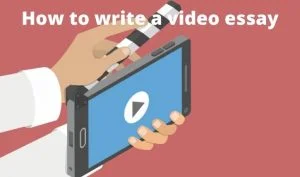
The video essay has become an increasingly popular way of presenting ideas and concepts in the age of the internet and YouTube. In this guide, we present a step-by-step guide on how to write a video essay and tips on how to make it.
While it is easy to write a normal essay, the structure of the video essay is a bit of a mystery, owing to the newness of the term.
However, in this article, we are going to define what is a video essay, how to write a video essay, and also How to present a video essay well in class.
What is a Video Essay?
A video essay is a video that delves into a certain subject, concept, person, or thesis. Video essays are difficult to characterize because they are a relatively new form, yet they are recognized regardless. Simply, video essays are visual compilations that try to persuade, educate, or criticize.

These days, there are many creatives making video essays on topics like politics, music, movies, and pop culture.
With these, essays have become increasingly popular in the era of video media such as Youtube, Vimeo, and others.
Video essays, like photo and traditional essays, tell a story or make a point.
The distinction is that video essays provide information through visuals.
When creating a video essay, you can incorporate video, images, text, music, and/or narration to make it dynamic and successful.
When you consider it, many music videos are actually video essays.
Since making videos for YouTube and other video sites has grown so popular, many professors are now assigning video essays instead of regular essays to their students. So the question is, how do you write a video essay script?
Steps on How to Write a Video Essay Script
Unscripted videos cost time, effort, and are unpleasant to watch. The first thing you should do before making a video writes a script, even if it’s only a few lines long. Don’t be intimidated by the prospect of writing a script. All you need is a starting point.
A video script is important for anyone who wants to film a video with more confidence and clarity. They all contain comparable forms of information, such as who is speaking, what is said, where, and other important details.
While there are no precise criteria that a video essay must follow, it appears that most renowned video essayists are adhering to some steps as the form gets more popular and acknowledged online.
1. Write a Thesis
Because a video essayist can handle a wide range of themes, video analysis essays lack defined bounds. The majority of essays, on the other hand, begin with a thesis.
A thesis is a statement, claim, theme, or concept that the rest of the essay is built around. A thesis might be broad, including a variety of art forms. Other theses can be quite detailed.
A good essay will almost always have a point to express. Every video analysis essay should have a central idea, or thesis, that ties the film together.
2. Write a Summary
Starting with a brief allows you and your team to document the answers to the most pressing project concerns. It ensures that everyone participating in the video production is on the same page.
This will avoid problems of mixing ideas or getting stuck when you are almost completing the project.
3. Choose a Proper Environment and Appropriate Tools
When it comes to writing your script, use any tool you’re familiar with, such as pen and paper. Also, find a writing atmosphere that is relaxing for you, where you can concentrate and be creative.
Consider what you don’t have to express out loud when you’re writing. Visual elements will be used to communicate a large portion of your content.
4. Use a Template
When you don’t have to reinvent the process every time you sit down, you get speed and consistency.
It’s using your cumulative knowledge of what works and doing it over and over again. Don’t start with a blank page when I sit down to create a script- try to use an already made template.
5. Be Conversational
You want scripts that use language that is specific and targeted. Always avoid buzzwords, cliches, and generalizations. You want your audience to comprehend you clearly without rolling their eyes.
6. Be Narrative
Make careful to use a strong story structure when you’re trying to explain anything clearly. Ensure your script has a beginning, middle, and end, no matter how short it is. This will provide a familiar path for the viewers of your video script.
7. Edit Your Script
Make each word work for a certain position on the page when you choose your words.

They must serve a purpose.
After you’ve completed your first draft, go over your script and review it.
Then begin editing, reordering, and trimming. Remove as much as possible.
Consider cutting it if it isn’t helping you achieve your goal.
8. Read Your Script Loudly
Before recording or going on in your process, it’s recommended to read your script aloud at least once. Even if you won’t be the one reading it, this is a good method to ensure that your message is clear. It’s a good idea to be away from people so you may practice in peace.
Words that flow well on paper don’t always flow well when spoken aloud. You might need to make some adjustments based on how tough certain phrases are to pronounce- it’s a lot easier to change it now than when recording.
9. Get Feedback
Sometimes it is very difficult to point out your mistakes in any piece of writing. Therefore, if you want a perfect video essay script, it is advisable to seek feedback from people who are not involved in the project.
Keep in mind that many will try to tear your work apart and make you feel incompetent. However, it can also be an opportunity to make your video better.
The best way to gather feedback is to assemble a group of people and read your script to them. Watch their facial reaction and jot own comments as you read. Make sure not to defend your decisions. Only listen to comments and ask questions to clarify.
After gathering feedback, decide on what points to include in your video essay. Also, you can ask someone else to read it to you so that you can listen to its follow.
A video essay can be a good mode to present all types of essays, especially compare and contrast essays as you can visually contrast the two subjects of your content.
How to make a Good Video from your Essay Script
You can make a good video from your script if you ask yourself the following questions;
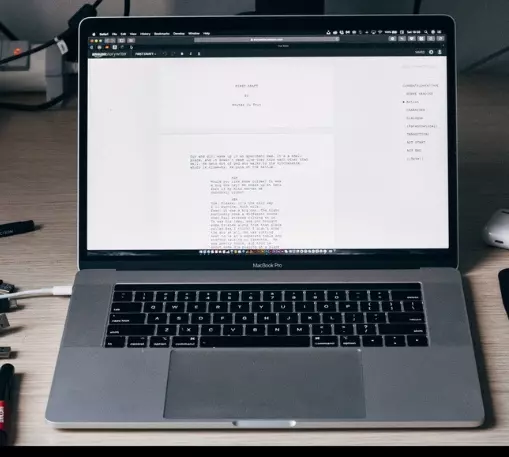
- What is the video’s purpose? What is the purpose of the video in the first place?
- Who is this video’s intended audience?
- What is the subject of our video? (The more precise you can be, the better.)
- What are the most important points to remember from the video?- What should viewers take away from it?
If the context had multiple characters, present their dialogues well in the essay to bring originality. If there is a need to involve another person, feel free to incorporate them.
How to Present a Video Essay Well in Class
- Write down keywords or main ideas in a notecard; do not write details- writing main ideas will help you remember your points when presenting. This helps you scan through your notecard for information.
- Practice- in presentations it is easy to tell who has practiced and who hasn’t. For your video essay to grab your class and professor’s attention, practice is the key. Practice in front of your friends and family asking for feedback and try to improve.
- Smile at your audience- this is one of the most important points when presenting anything in front of an audience. A smiley face draws the attention of the audience making them smile in return thus giving you confidence.
- Walk to your seat with a smile- try not to be disappointed even if you are not applauded. Be confident that you have aced your video presentation.
Other video presentations tips include;
- Making eye contact
- Have a good posture
- Do not argue with the audience
- Look at everyone around the room, not just one audience or one spot
- Rember to use your hand and facial expressions to make a point.

Joseph is a freelance journalist and a part-time writer with a particular interest in the gig economy. He writes about schooling, college life, and changing trends in education. When not writing, Joseph is hiking or playing chess.

Share this post
How to create a video essay with students.
- February 15, 2023
Video essays are a powerful and engaging way for students to express their understanding of a particular topic or concept. By combining video footage with voiceover narration, students can create a multimedia presentation that showcases their knowledge and creativity. To create a video essay with students, there are free tools you can use.
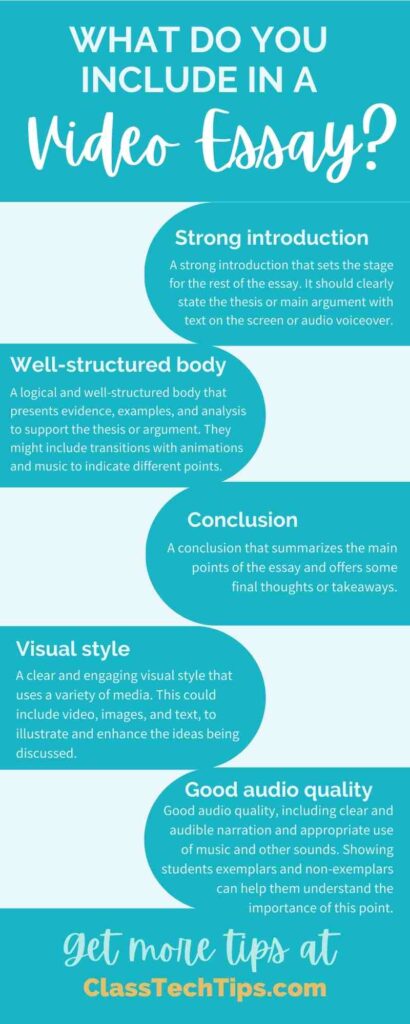
In this blog post, we will explore how teachers can guide their students through the process of creating a video essay. And I’ll share some of my favorite movie-making tools for students. Don’t forget to download these graphic organizers you can use to plan for your next video project.
What is a video essay?
A video essay is a short film that explores a specific idea or theme. It typically uses various forms of media, such as video, images, and text. In a video essay, a student presents a clear thesis or argument. They use a variety of visual and audio elements to support their ideas and engage the viewer.
If you are new to using video essays but have introduced traditional essay writing techniques in the past, I encourage you to revisit the same checklists, supporting materials, and rubrics and add on if needed.
Here are some key things a student can include in a video essay:
- A strong introduction that sets the stage for the rest of the essay. It should clearly state the thesis or main argument with text on the screen or audio voiceover.
- A logical and well-structured body that presents evidence, examples, and analysis to support the thesis or argument. They might include transitions with animations and music to indicate different points.
- A conclusion that summarizes the main points of the essay and offers some final thoughts or takeaways.
- A clear and engaging visual style that uses a variety of media. This could include video, images, and text, to illustrate and enhance the ideas being discussed.
- Good audio quality , including clear and audible narration and appropriate use of music and other sounds. Showing students exemplars and non-exemplars can help them understand the importance of this point.
Overall, a successful video essay should be well-organized, visually engaging, and even thought-provoking. It should provide a fresh perspective on the topic and offer the viewer something new and interesting to think about. You might ask students to lead a discussion about the topic afterward or ask for feedback after sharing their project with their classmates.
How do you choose the right tool for your video essay?
If you are deciding on what movie-making tool is the best fit for creating a video essay, there are a few things to consider. Here are some tips for figuring out which app or website is the best one for creating a video essay:
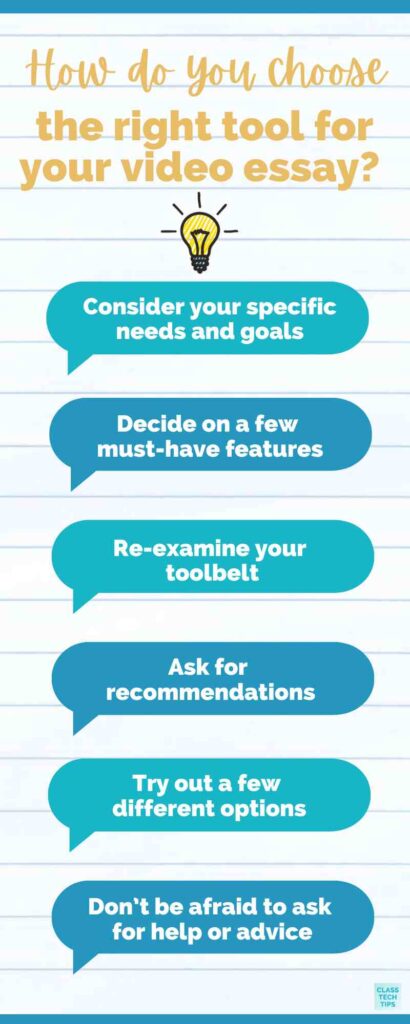
- Consider your specific needs and goals . What are you trying to achieve with your video essay? Do students need a lot of advanced editing tools? Will a simple and straightforward tool get the job done?
- Decide on a few must-have features. Look for an app or website that offers the features and functionality that your students need. This might include things like the ability to import and edit footage and add text and graphics. I suggest using a tool that lets students easily create transitions and add effects.
- Re-examine your toolbelt. I often use the phrase “embrace your place” on my podcast ( listen to new episodes here ). If there are tools you’re already using that can accomplish the task of creating a video essay, make sure to try out that one first.
- Ask for recommendations. Find out what your colleagues are already using and love. Alternatively, you might read reviews and research to find out what other people are saying about the app or website. This can give you a sense of its reliability, ease of use, and overall quality.
- Try out a few different options . Many different tools will help you accomplish the same goals. You may want to check out a few options to see which one feels the most intuitive and user-friendly. Many apps and websites offer free trials or demos, so you can test them out before making a decision.
- Don’t be afraid to ask for help or advice. If you’re unsure which app or website is right for you, you can always reach out to friends, colleagues, or online communities for recommendations (see above).
Tools for Making a Video Essay
Ultimately, the best app or website for creating a video essay will depend on your individual needs and preferences. However, by considering your goals, researching your options, and trying out a few different options, you should be able to find the right one for you.
Adobe Express
This free, web-based app allows users to create videos, graphics, and web pages. It has a variety of templates and design options to choose from and a free version for educators. Check out some of their recent creative challenges here.
Adobe Premiere Rush
Adobe Premiere Rush is a video editing software that allows users to quickly and easily edit and produce professional-quality videos. It is a step up from Adobe Express and is available for desktop and mobile devices. It Includes features such as automatic color grading, audio ducking, and the ability to add titles, graphics, and transitions.
Microsoft Flip (formerly Flipgrid) is a web-based platform and mobile app that allows educators and students to create and participate in video discussions. Students can use this tool to create short videos using a green screen and other features like adding text to the screen.
Canva
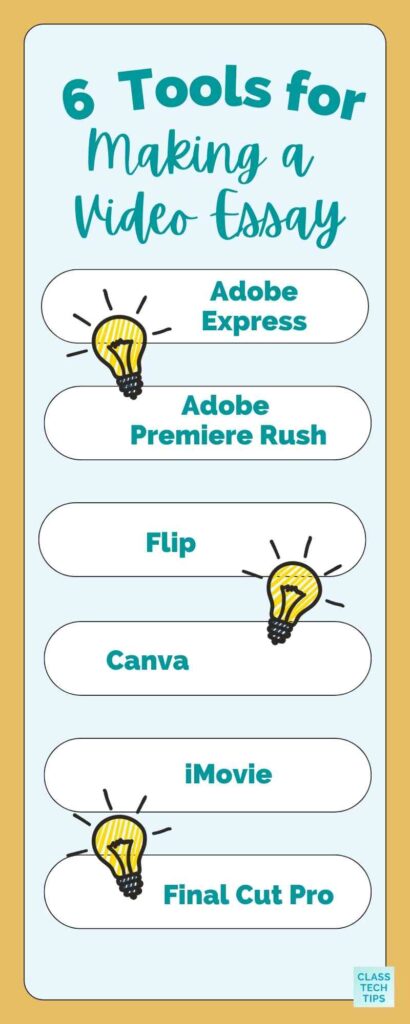
Canva is a graphic design platform that allows users to create visual content such as social media posts, advertisements, and presentations. It is available online and as a mobile app and offers a wide range of templates and design tools, as well as the ability to upload and use custom graphics and fonts. You can use Canva for Education for free to create videos and graphics.
iMovie is a free video editing app available for Apple devices, including iPad, iPhone, and Mac OS. It is user-friendly and has a variety of features, including the ability to add music, text, and special effects to videos.
Final Cut Pro
Final Cut Pro is a professional-grade video editing software for Apple users. This video tool is used by editors and filmmakers and offers a wide range of advanced features. It may be something students want to explore if they are passionate about filmmaking.
Benefits of Using Video Essays in the Classroom
Using video essays in the classroom can have several benefits if you’re looking to make a case for video essays. Firstly, video essays can provide an engaging and interactive way for students to learn and express their ideas. This can help to foster a more dynamic and engaging learning environment. Secondly, video essays can provide a more inclusive learning experience, allowing for a broader range of student voices and perspectives to be heard.
Thirdly, video essays are an excellent option for students seeking a more creative outlet. They can create a visual representation of information and ideas. Additionally, video essays can be easily shared and accessed online, allowing for collaboration and feedback from both peers and teachers. Overall, incorporating video essays into the classroom promotes creativity, critical thinking, and student engagement.
Getting Started with Video Essays
If you want to find examples of video essays, there are a few places you can go. First, you may want to search for “video essays” on YouTube or Vimeo. This link will take you to my free download with YouTube tips for teachers.
Try searching for specific themes related to topics students are studying. For example, “literature analysis video essays” or “civics video essays” to find more specialized collections of videos. If you are searching for examples along with your students, you might want to check out my article for Edutopia full of tips for online searches.
Creating a video essay with students can be a fun and rewarding experience for both teachers and students alike. Not only does it provide students with a creative outlet for expressing their understanding of the material, but it also allows for a deeper level of engagement and understanding. I’d love to hear your thoughts and help you celebrate your students’ creations. If you share in social spaces, tag me @ClassTechTips on your favorite platforms, including Instagram and Twitter .
Find more posts on Writing Strategies:
- Innovative Assessment How to Incorporate Video Essays in Your Classroom – Easy EdTech Podcast 206
- Boost Student Writing During Be An Author Month
- 3 Social Media Inspired Student Projects – Easy EdTech Podcast 192
- Video Journals in the Classroom
Stay up-to-date on all things EdTech.
EdTech tips and resources for educators, straight from Monica’s desk every Monday. Don’t miss a thing.
Share this post:

Monica Burns
Dr. Monica Burns is a former classroom teacher, Author, Speaker, and Curriculum & EdTech Consultant. Visit her site ClassTechTips.com for more ideas on how to become a tech-savvy teacher.

7 Ways to Use AI Music in Your Classroom
AI-generated music can transform your classroom. Explore practical ways to spark creativity and enhance learning with AI music tools.

Gamification in the Literacy Classroom with Dr. Lauren Gehr – Easy EdTech Podcast 281
Discover how gamification transforms literacy lessons! Learn from Dr. Lauren Gehr’s insights on boosting critical thinking and collaboration.

How to Use Digital Portfolios with Book Creator
Explore digital portfolios with Book Creator and use this adaptable, student-friendly platform to capture student learning journeys.

Start every week with a plan and stay organized this school year!
- You'll get a standard daily planner template, weekday, and weekend templates
- A monthly at-a-glance calendar and a monthly goal setting sheet
- A few extra pages for notes, contacts and passwords
Free summer Checklist

5 Things to Do Now to Make Tech Easier in the New School Year
- Try these five tips now and save time when you head back to school this fall.
- This quick list gives you FIVE action items to make your technology integration easier this school year.
- Save time this school year with a special EdTech checklist

Spring Cleaning with an EdTech twist!
- Special eBook with 10 Quick Tips to Organize Your Google Drive
- If you're not using Google Drive, these strategies are customizable for Dropbox, Office365 and more!
- Get a fresh start this spring with these actionable tips for cleaning up your online organizational systems
Are you an EdTech company interested in getting featured on Class Tech Tips? Email [email protected]
Free planning pages, free summer checklist, spring cleaning guide, free - 10 quick tips to organize your google drive.
Movie Reviews
Tv/streaming, collections, chaz's journal, great movies, contributors, "the art of the video essay," a page by kevin lee, grandmaster of the form.

By Kevin Lee, Our Far-Flung Correspondent
In the age of YouTube and Vimeo, one of the most exciting developments in film culture are online video essays that explore different aspects of the movies. These videos take footage from films and reconfigure them using editing, text, graphics and voiceover to reveal startling observations and insights, visualizing them in ways that text criticism can't. These videos are typically produced independently by using consumer-level equipment, demonstrating that just about anyone with a computer can be both a filmmaker and a critic. The only limits are those of imagination and intelligence.
Below is a handpicked list of some of the most outstanding and representative works so far among this emerging genre of online videos. All of them feature regular contributors to Roger Ebert's website. Many of these videos and their creators will be featured in a panel presentation at this year's Ebertfest in April.
1. "The Sight and Sound Film Poll: A Tribute to Roger Ebert and His Favorite Films." Produced in anticipation of last year's Sight and Sound International Critics Poll of the greatest films of all time. The video focuses on four of Roger's favorite films of all time, the ones that have been part of his top ten lists for the last 30 years. His writing on those films, as found in an article written in his Video Home Companion from the 1980s, is used as a script and narrated by a chorus of 20 Ebert contributors. Read Roger's response to the video: http://blogs.suntimes.com/ebert/2012/05/a_symphony_of_voices.html
The Sight and Sound Film Poll: An International Tribute to Roger Ebert and His Favorite Films from Press Play Video Blog on Vimeo .
2. "The Spielberg Face." By Kevin B. Lee. An exploration of the human face as the visual signature throughout the career of Steven Spielberg .
3. "Falling: The Architecture of Gravity." By Jim Emerson. A video essay comparing how different movies and cinema techniques depict the act of falling. Accompanied by Jim's article on his Scanners blog: http://blogs.suntimes.com/scanners/2009/01/the_architecture_of_gravity.html
4. " Wes Anderson : The Substance of Style, Part 5." By Matt Zoller Seitz. The prologue to The Royal Tenenbaums is annotated with text and inserts pointing out different stylistic influences of the sequence. The video is the finale of a five-part series of video essays that led to a book project on Wes Anderson, which will be released this year. Originally published on the Moving Image Source: http://www.movingimagesource.us/articles/the-substance-of-style-pt-5-20090413
5. "Constructive Editing in Robert Bresson's Pickpocket." By David Bordwell and Kristin Thompson. Two of cinema's leading scholars explore the art of editing. Part of a series of video essays produced with Criterion as educational supplements for Bordwell and Thompson's legendary textbook Film Art: an Introduction. Featured on their blog Observations on Film Art: http://www.davidbordwell.net/blog/2012/10/28/news-a-video-essay-on-constructive-editing/
Constructive Editing in Robert Bresson's Pickpocket from David Bordwell on Vimeo .
6. "Low Budget Eye Candy." By Steven Boone. A fierce advocate for DIY indie filmmaking demonstrates how George Lucas was once a truly resourceful low budget filmmaker. Originally featured on the Scanners blog: http://blogs.suntimes.com/scanners/2009/02/george_lucas_lowbudget_eyecand.html
LOW BUDGET EYE CANDY #1 from Steven Boone on Vimeo .
7. "Super: A Brief History of Superhero Films." By Michael Mirasol. Featured on Ebert's Far-Flung Correspondents: http://blogs.suntimes.com/foreignc/2012/05/a-brief-history-of-the-superhero.html
SUPER: A Brief History of Superhero Films from Michael Mirasol on Vimeo .

Roger Ebert
Roger Ebert was the film critic of the Chicago Sun-Times from 1967 until his death in 2013. In 1975, he won the Pulitzer Prize for distinguished criticism.
Latest blog posts

A Look Back at MUBI FEST CHICAGO

2024 XL Film Festival & Summit – Highlights of its Sophomore Year

Locarno Film Festival 2024: By the Stream, Toxic, Drowning Dry, When the Phone Rang

In Memoriam: Alain Delon
Latest reviews.

Close Your Eyes
Glenn kenny.

Matt Zoller Seitz

Close to You

Tomris Laffly

Peyton Robinson

Caligula: The Ultimate Cut
Peter sobczynski.
Video Essay Analysis and Composition
Lesson plan, grade level.
Undergraduate (Face-to-Face or Online)
Students will be introduced to a contemporary essay genre to see how people argue in multimodal environments.
Students will reinforce their understanding of various ideas from composition studies discussed throughout the semester, including Aristotle’s Triangle, Toulmin’s Model, and paragraph structure. 1
Students will demonstrate their understanding of expository writing and argumentative approaches.
Students will compose a short video essay based on a previous assignment to learn the basics of video essay composition.
Background and Context
I provide these exercises near the middle of the semester as a way to show the relevancy of what students are learning in the composition class. I teach this genre in both Composition 1 and 2. The exercises demonstrate how people use the same structure and argumentative techniques in video essays that the students are using in their written work. Given the increasing popularity of video essays, this assignment allows students to see what contemporary expository writing is like in the digital age.
Total Estimated Class Time
A single class period (approx. 50 mins.)
Videos Used for This Session and Assignment
Jack Saint’s “The Truth about 90s Cartoons and ‘LGBT Brainwashing’”
https://www.youtube.com/watch?v=L–Fa8_ujBA
Jack Saint’s “Sky High: Disney’s Fascist Eugenics Movie”
https://www.youtube.com/watch?v=iIdbLUm-ez8
Sequence of Activities
- Viewing and Analysis (30 mins.)
As students watch the videos, they take notes, guided by the questions in the Video Essay Analysis exercise.
- Class Discussion (20 mins.)
As a class, we share everyone’s answers, referring to specific sections of the videos. This discussion creates a lot of interaction: some students are unsure about what the thesis is, while others find it easily—more easily than they found the thesis in any written essay previously provided.
Then we discuss whether students would rather write traditional essays or compose video essays. Many students prefer watching the essay video to reading an essay, yet most would rather compose a written essay, since they recognize that it would take more time to complete and edit a well-paced video essay.
These discussions always reinforce compositional elements and allow students to think about how genre and structure affect the creation of an argument.
Follow-Up Activities
For homework, students create one-minute recorded versions of traditional essays they wrote earlier in the course, then share the recordings in discussion boards. This activity offers them a chance to experiment with speaking while using a scripted argument and helps them think about how they can adapt, retool, and revise their claims.
Possible Alterations
One way to strengthen the discussion is to assign the students to watch the video for homework and complete the exercise sheet before they come to the next session. The main reason my students watch the video in class is that they have limited access to the Internet outside the school because they live in a rural area. If students lived in an area where they could access the Internet asynchronously, I would assign watching the video before they came to class so that we could spend more time on analysis and discussion.
I have used these exercises for online composition classes and made only minor adjustments. For online classes, we simply divide each stage into individual assignments and discussion boards. The students answer the questions about the video essay on their own and then share the responses in a discussion board. The larger discussion occurs in the same discussion board. The video essays are posted in another forum, an activity that creates further dialogue about this genre.
You can use these assignments in secondary education courses as well. If time and curricular requirements allow, you can easily use more essays with a similar theme to help show how people respond to topics and each other’s interpretations.
Although Jack Saint’s videos are fun to use, especially since I teach film as well, I would recommend finding video essays that coincide with a course’s theme or that focus on current events. The topics of video essays on the web are as varied as the approaches used to create them. Certain ones use a simple webcam, while others use more sophisticated editing. In any case, introducing video essays in a composition course allows students to see and hear arguments—a valuable experience.
1 Aristotle’s Triangle, also known as the rhetorical triangle, includes the foundational ways in which speakers or writers can appeal to their audiences. The three components include pathos (appeals to an audience’s emotion), logos (appeals to an audience’s sense of logic and reasoning), and ethos (appeals that establish an author’s credibility for an audience). Stephen Toulmin created his model to show the fundamental elements of argumentation in writing. The basic elements include claim, data, and warrant or synthesis. He argues that these three components are needed for any argument to be successful, and this structure is the basis for most paragraphs for expository writing. The traditional formula for structuring a paragraph involves starting with a topic sentence argument, followed by examples, and ending with synthesis sentences.
Lesson Materials
Video Essay Analysis Exercise
Video Essay Prompt
Join the Conversation
We invite you to comment on this post and exchange ideas with other site visitors. Comments are moderated and subject to terms of service.
If you have a question for the MLA's editors, submit it to Ask the MLA!
Your e-mail address will not be published
The best video essays of 2021
Introspection and the act of watching emerged as recurring themes across a year in which video makers responded to the realities of a continuing pandemic. Our poll of 30 video essayists, academics, critics and filmmakers highlights 120 recommendations.

After ‘Year of the Virus 2: 2 Metres 2 Vaccines’, it’s no surprise that we’re presenting yet another poll inevitably marked by isolation and fatigue.
There have been numerous developments and projects of note, continuing the previous year’ s theme of collaboration. There’s been the forming of Video Essay: Futures of Audiovisual Research and Teaching , an academic research project led by Johannes Binotto at Lucerne University in collaboration with the University of Zurich, which has produced some fascinating work this year; the One Villainous Scene collaboration, for which Nando v Movies gathered 230 essayists on YouTube to explore their favourite villains; the TV Dictionary collection, for which 20 essayists followed Ariel Avissar’s open invitation to dabble in videographic ruminations on television series; and two more volumes of the Essay Library Anthology, ‘micro-essay compilations’ by members of the Essay Library Discord community, touching on the very relevant themes of ‘time’ and ‘death’ .
This year also saw the return of several big names, such as Taylor Ramos and Tony Zhou (the team behind Every Frame a Painting ) in their contributions to Netflix’s Voir series, and Mike Rugnetta (former host of Idea Channel ), who began uploading essays to a personal account .
But even amid these excellent projects, not only have video makers continued to struggle within the realities of a continuing pandemic, even poll voters have been down from previous years, suggesting that many of us have struggled with not only finding the time to make but also finding the time to watch video essays this year.
That being said, many of the videos that have been made and watched seem to have turned their attention towards the very act of watching, a trend that’s perhaps unsurprising given the amount of time we’ve all been afforded with ourselves this year. Left to our own devices, it’s only a matter of time before we begin to look inward, and thus introspection marks a clear theme in this year’s most talked-about videos. This result may be even more inevitable than any undercurrent of fatigue or isolation, as what would a group of video essay enthusiasts love more than essays about essays and videos about videos.
There’s no shame in a little indulgence this year.
Trends and numbers
Of the 30 contributors to the poll this year (down from 42 last year), 20 are male, 9 are female and 1 is non-binary. Two thirds of them are based in Europe, one third in the USA . They are video essayists, academics, critics and filmmakers. They submitted a total of 178 votes, for 122 unique entries that span online video essays, essay films, documentaries, installations, television series and Twitter threads. These works were made – or published – this past year, by both established essayists and newcomers to the field; they range from 20 seconds to 6 hours in length, with the average length above 22 minutes (5 minutes longer than last year’s average).
Practices of Viewing , “a video essay series on new media and their many old histories” by Johannes Binotto, was the top-mentioned item, receiving a total of 13 mentions (of either the series as a whole or several individual entries). Also of note were: the collaborative TV Dictionary collection, which received 7 mentions (of either the project as a whole or of various individual entries); Screening Room: On Digital Film Festivals by Jessica McGoff (6 mentions); and What Isn’t a Video Essay? by Grace Lee (5 mentions). As previously stated, most of these are devoted to an exploration of the subject of video essays or videographic criticism and of various practices of consuming, engaging with and reacting to media images. This trend also extends to Max Tohline’s A Supercut of Supercuts (4 mentions), Cristina Álvarez López and Adrian Martin’s Videography 1978 (4 mentions), and several other entries featured on the poll.
Of the essayists whose work is featured, 38% are female (up from 33% last year, and 24% the year prior) and 50% are male (down from 53% last year, and 68% the year prior), with the remaining 12% made by mixed-gender teams or non-binary essayists.
The videos are overwhelmingly presented in English (95%) and are predominantly from the US (36%) and the UK (22%), followed by 23 other countries (mostly in Europe), marking a gradual rise in the number of countries featured in the poll. The dominant focus in terms of medium, though somewhat less so than in previous years, remains film (63% of videos), with television a more significant – though still distant – second (13% — up from 5% last year). 23 of the videos (or 19%) were published in various online academic journals, primarily [in]Transition (10 entries) and Tecmerin (5 entries).
Besides voting for their favourite video essays of the year, contributors were also given the option to suggest video essayists to be featured on our new ‘Emerging voices’ section, which seeks to spotlight new makers of note, whose work this year was significant or impactful, and who are well worth keeping an eye on in the following years.
Emerging voices
This year has been one not just of self reflection, but of discovery. In light of all the discoveries we’ve been making, we wanted to use this year’s poll to spotlight new voices who have emerged this year. We asked our peers to submit individual essayists that they believed had truly struck out anew this year, be that through debuting their first works, or by significantly expanding their own profiles.
One journey many of us can relate to is that of finding our voice throughout our academic progression. Many of our emerging voices are students whose works originally developed as academic assignments. Emily Su Bin Ko, from the University of Massachusetts, was one such creator. For her latest piece, the pointed videographic exploration Citizen Kane: Transcending Bazin’s Dichotomy , she was singled out by both Barbara Zecchi and Adrian Martin as having demonstrated her analytical talent, an engaging style and a thought-provoking voice.
Another was Niki Radman from the University of Glasgow, who made her debut this year with the video essay eye/contact , and was noted by Ian Garwood. The piece explores the work of Barry Jenkins through a critical supercut, and demonstrates an exciting mastery of the form and an ability to poetically communicate her ideas.
Matthew Smolenski from the University of Warwick was suggested by Katie Bird as another newcomer of note for their video essay Here, There and Everywhere: Movement in the Beatles’s Fiction Filmography , which deftly addresses movement and sound on screen through the context of the Beatles’ filmography.
Myrna Moretti from Northwestern University was also praised by Katie Bird. Her work, Friends from TV on the Internet , made for the Desktop Documentary Seminar at SCMS 2021, manages to be both lighthearted and poignant as it explores fandom, nostalgia, and climate anxiety.
Not all submissions received were discovered through traditionally academic spaces. Some were video essayists who have been accruing greater audiences on YouTube. Maia, known as Broey Deschanel , was put forth by Dan Schindel for her well-researched and thoughtful analysis of pop culture subjects. Her works on Sofia Coppola and Love Island were mentioned specifically, and while she has been working steadily since 2018, her work of this past year has been exceptional.
Yhara Zayd was also recognised by Dan Schindel for the uniqueness of her topics and the finesse of her analyses. Since 2019, she’s been creating thoughtful and original critiques on everything from Skins US to Reefer Madness (1936), and an acknowledgement of her work is well-deserved.
Corinth Boone is a cartoonist, animator, and now video essayist, with the debut of her piece, So I Decided to Watch All the Lupin III Movies . She was specifically hailed by Shannon Strucci for her wit, editing skills, and the well-researched manner of the work.
Finally, Sophie from Mars was suggested by Grace Lee. While she has been successfully analysing media and culture for many years now, Sophie was specifically heralded for the achievements of their work of the last year, the skilful honing of their visual style, and an affecting personal point of view.
Growth is a term that is wholly dependent on context. Thus, the creators selected for this emerging voices section represent the diversity of the videographic community itself, and we’re pleased to share each of their stories.
All the votes
Film theorist, curator and occasional video essayist, Charles University in Prague and Národní filmový archiv
Screening Room: On Digital Film Festivals by Jessica McGoff
Throughout the pandemic, I have become fascinated with the idea of extending the screen-mediated experience of the world beyond the actual computer or smartphone interface. Chloé Galibert-Laîné already explored this notion in 2020’s Forensickness ; this year, Jessica McGoff utilised the ‘desktop cinema without the desktop’ approach to reflect on attending digital film exhibitions within the spatial monoculture of her apartment. A paper-made quasi-cinematic dispositif crushed by an intervention of a fluffy cat is only one of the many playful experiments McGoff stages to invent new ways in which we can exploit the limitations of the pandemic against the grain.
The Elephant Man’s Sound, Tracked by Liz Greene
One of the great potentialities of videographic criticism is giving insight into the research process in all of its stages and facets. Yet, rarely do videographic essays delve into such meticulous depth as Greene’s investigation of her ongoing encounters with The Elephant Man’s soundtrack. One minor detail – a strangely cleaned-up line of dialogue – serves as a MacGuffin that sparks a journey across often obscure or intimate research artefacts and software interfaces. The essay highlights the alignment between research and post-production as material processes whose gaps, fissures, and excesses tell their own stories.
The Thinking Machine #48: Videography 1978 by Cristina Álvarez López and Adrian Martin
Examination of continuities and discontinuities between analogue and digital images is another area where videographic criticism thrives. Besides the works of Johannes Binotto, whom I mentioned in previous polls and who continues this line of work in the Practices of Viewing series, a moving autobiographical essay on films as material artefacts was created by López and Martin. Videography 1978 offers a fresh look on the ‘unattainable object’ issue, highlighting, for example, the non-identity of analogue and digital frames. The essay testifies that despite the (often justified) criticism, cinephilia as a mode of watching and analysing films remains relevant.
Mediated Auscultation by Emilija Talijan
Out of this year’s essays published in [in]Transition, Talijan’s exploration of the relationship between cinema and the stethoscope resonated most closely with me. I generally appreciate when videographic works reach toward a broader context of audiovisual culture, particularly of its very origins, and Mediated Auscultation finds the proper equilibrium between structured argumentation and formal experimentation. The stethoscope’s technological possibilities deconstruct the audiovisual unity of film back into a multiplicity of deranged, often impenetrable images and sounds, with a nerve-racking heartbeat rhythm always hovering around.
Train Again by Peter Tscherkassky
Once again, my list would not be complete without at least one experimental found footage film. Tscherkassky’s treatise on the ever-present bond between trains and cinema overflows with allusions to early cinema and the avant-garde, yet achieves to marry the old with the always already new. The Austrian artist’s vintage analogue deformations join forces with digital pixelation to show the train-image for what it is – a constantly trembling and crumbling entity on the verge of destruction and rebirth.
Ariel Avissar
Video essayist and media scholar at Tel Aviv University
Viewing the world outside from the comfort/prison of her room, McGoff offers a perceptive meditation on contemporary ways of seeing that is as irreverent as it is reverent. Quintessential viewing for the pandemic era. Make this a double feature with McGoff’s My Mulholland from last year, which likewise investigates the superimposition of online and offline experience.
I am Sitting in a Room, Listening to Mank by Cormac Donnelly
Sitting in a different room, Donnelly offers a sonic counterpoint to McGoff’s, offering a fascinating examination of the sonic soundscapes that envelop us all as we sit, in our own rooms, watching and listening (though perhaps not listening as attentively as we ought to). Make this a double feature with Donnelly’s Sonic Chronicle Post Sound from last year, which investigates (diegetic) sonic soundscapes.
Practices of Viewing by Johannes Binotto
Like McGoff and Donnelly, Binotto’s fascination is with the way we interact with images and sounds, and this phenomenal series, consisting of five entries to date, is a must-watch for anyone interested in the way technology mediates images and sounds, and the possibilities it opens up for interfering with and complicating its own mediation. My personal favourite is the one on screenshots , but it’s dealer’s choice, really. Make that last one a double feature with Cristina Álvarez López and Adrian Martin’s Videography 1978 , Binotto’s explicit source of inspiration, which also explores technologies of viewing – and their pre-digital antecedents.
Irani Bag by Maryam Tafakory
Made as part of the Monographs series of essays on Asian cinema commissioned by the Asian Film Archive last year, which is finally available online now, Tafakory’s soulful and mesmerising video employs excerpts from 24 Iranian films to interrogate the ways in which a handbag can serve as a surrogate for bodily contact, enabling the performers to “touch without touching”. Make this a double feature with Tafakory’s longer essay film follow-up, the upcoming Nazarbazi ; it is a meditation on the subject (and absence) of touch in Iranian cinema that is powerful, reflective and, yes, touching.
A History of the World According to Getty Images by Richard Misek
Misek offers a thoughtful and ever-timely exploration of the ways in which commercial archives mediate – and commodify – our access to the past, and offers a mode of resistance in the form of a direct intervention. Be on the lookout for it when it comes out sometime next year; in the meantime, whet your appetite with this shorter, early iteration of the project titled Captured Images , which can serve as a sort of trailer for the longer film – and also stands on its own.
Mad Men ’s ‘Babylon’ by Ariane Hudelet
Hudelet patiently and diligently traces multiple intertextual threads offered by a song featured on an early episode of Mad Men, presenting the kind of thorough, insightful and enjoyable analysis that I, for one, would love to see dedicated to more works of television in videographic form. On that note, make this a double feature with Occitane Lacurie’s Prendre conscience / perdre connaissance , a fascinating desktop examination of intertextual relations between Westworld and Last Year at Marienbad.
A Supercut of Supercuts: Aesthetics, Histories, Databases by Max Tohline
And finally, Tohline’s epic, feature-length reflection on the supercut is a comprehensively impressive (or impressively comprehensive?) investigation of one of the digital age’s most viral videographic genres. Over its 130 minutes, Tohline examines the supercut’s aesthetics, structures and effects; its complex and multiple contexts and histories; and its relation to technology and ideology, as a simulation of database logic. The analysis is coherent and persuasive, and the diverse perspectives are highly informative and enriching. No need for a double feature on this one (though I dare you not to look up any of the numerous supercuts sampled in the video).
Johannes Binotto
Lecturer in media and cultural studies, video bricolageur, leading videoessayresearch.org
I feel absolutely unable to have an overview of what work has been done in the field throughout this year. Instead the video essays on my list are all works that I came across not because I was searching for them but purely by accident, strangely in-between, and when I least expected them. Each of them hit me sideways so much that I still don’t want to recover from what they did to me.
How to Perform Teaching During a Pandemic Spring Session, 2020: GENDER STUDIES , Rain & Cats Cut by Dayna McLeod
I was watching Dayna McLeod’s haunting take on Lynch’s Wild at Heart when I came across this other piece that perhaps many would not even consider a video essay. McLeod performs the performance of someone who has to perform gender studies (and its interest in performance) under the circumstances of COVID remote teaching and being constantly interrupted. This is really wild, unpredictable, intellectual, clever, very funny, but – and this gets me the most — so extremely touching in its acknowledging one’s own awkwardness and vulnerability. We always joke about the things that hurt us most.
3 x Shapes of Home by Elisabeth Brun
What would seem as a purely conceptual and abstract research on how to investigate landscapes through different film practices turns out to be like a poem by Whitman, encompassing the most intimate and the most universal. A film in which the sudden freeze of an image and the humming of the filmmaker cuts me so much I start to cry. A crab gently poking at the camera is a sight I will keep dreaming of.
RETOURNE - TOI (Reading Ovid’s ‘Orpheus & Eurydice’ in Portrait of a Lady on Fire) by Catherine Grant
I thought I already knew this video but when seeing it during a workshop I was shocked by how much it affected me. It left me overwhelmed yet at the same time made me want to work myself in exactly this state of overload. I guess I heard the Althusserian interpellation in the title. And it is fitting that I had to return to this video to find out its unique power since it is about the hypnosis of repetition, both on narrative and formal level.
The Conversation is the Confessional by Max Tohline
I probably should have picked Max’s incredible jumbo jet of a video essay on the supercut, but this one means a lot to me because it is among many things also a personal present. Seeing a collection of video essays students of mine made on The Conversation, Max not only fell in love with them but wanted to join our group by contributing his own thoughtful, sensitive, and complex analysis of the religious under- under overtones in this film. Like a confession of its own. What a gift!
The Archival In-Between by Evelyn Kreutzer and Noga Stiassny
I don’t know how to talk about this one because it attempts what must remain impossible, approaching the unapproachable. It uses archival material that I am not sure anyone should ever use again but of which I am also convinced that it must be seen. The video’s impossibility seems to me the impossibility of the archive per se Foucault wrote about. So how then even to begin to make this video? It gives no answer but begins and remains beginning. Like the crackling noise on the soundtrack: a needle in the empty grooves of a record before the music starts.
Vertigo - Making Space. A 3D Video Essay by David Bucheli
Who hasn’t fantasised of seeing Vertigo in 3-D? David’s video fulfils the dream but does so by rendering it a disturbing nightmare. There are moments when the 3-D-effect works as one would think it is supposed to, giving us Scotty and Madeleine as seemingly graspable bodies but even more fascinating are those moments when the images we see on left and right eye no longer align but completely diverge, fall apart, splitting your consciousnesses in half. The longer I watch the more I fear this video will damage my brain irrevocably.
TV Dictionary — On Becoming a God in Central Florida by Clair Richards
This was a triple surprise. A video on a series I had never heard of before by an essayist I hadn’t known before focusing on a term I never cared about before. Watching admiring the scene it picks and how it dances together with the text I ask myself: What is the strength of a video essay? For me it’s not tech-savviness nor the amount of material or concepts it works with. I think it’s rather the willingness to make yourself be seen doing something you haven’t yet nor ever will have mastered. It’s not a confidence thing.
Assistant professor, communication, University of Texas at El Paso
The Elephant Man ’s Sound, Tracked by Liz Greene
Greene’s video leads the viewer through a unique historical investigation of initial discovery, possibility, and lingering questions in a way that allows the viewer to feel how answers to a production’s history are many, and regularly conflicting. Unlike most historical presentations that simply point at the ‘evidence’, Greene allows us to literally ‘search’ and ‘flip the pages’ alongside. Greene focuses on equivocation, back tracking, and talking around, and what is largely left unsaid in many of the interviews. This project cuts around auteurism, without being a critique and articulates Splet amongst a larger set of industrial and and national forces.
Long Take, Pop Song by Ian Garwood
Nothing brought me more joy this year than this little pop diddy composed by Garwood and sung by Anna Miles ear-worming its way into my daily thoughts. Beyond the catchiness of the tune that directs this video on the important of pop music in a scene from Before Sunrise, Garwood brings in a pop aesthetic to the video with the use of animated and freeze frames, turning the conceit of the Before Trilogy into a comic book that takes place within the span of a pop song. It is a delight and a treat to see criticism have fun.
From now on, I won’t be able to watch Jeanne Dielman without also seeing McGoff’s own sink. This moment where a small scene of washing dishes floats about McGoff’s sink (the lines of the tiles almost matching) last only 6 seconds, but the gesture speaks to the intimacy and vulnerability of McGoff’s style. Her now signature approach to desktop, combined anew with the casual recordings of daily life (the record, the cat, the windows, the screens, the screens, the screens) offers a critical and personal glimpse into something that felt/feels all too familiar over the past years.
The TV Dictionary project by Ariel Avissar and various
Ariel Avissar’s TV Dictionary project was enormously generative for my own thinking about what diverse and creative experiments could be produced out of a simple prompt. I was inspired to create my own lists of terms and shows I would apply them to, and though I never made one, this speculative edit was a thrill. There’s too many videos to celebrate. But Libertad Gills and Juan Llamas Rodriguez tapped into the layering of their terms ‘ experience ‘ and ‘ comfort ’: how their shows feel to viewers and what is felt between characters in a moment or shared series of moments.
Beyond inspirational, and field changing, nothing made me want to throw in the towel on making more than seeing Binotto’s playful, critical, and incisive video series Practices of Viewing. Each one challenged our ways of ‘seeing’ and making, each one carefully bringing in new techniques to test the boundaries and possibilities of videographic form. But whatever trepidation I felt, was always overshadowed by the openness and curiosity that grounded each of Binotto’s experiments and his welcomeness as a videographic maker joyfully throwing out these gambits for the rest of us to up our games. But, MASK did me in.
Mourning with Minari by Kevin B. Lee
I’ll need to sit and rewatch Lee’s video essay many more times before I’ll have words good enough to match his evocative “gathering of images” of grieving through making, of holding space, and of breathing this memorial into being. By walking us through Minari, Lee leaves room for the questions trauma and white supremacist violence has left in its wake. By showing what has been made invisible, Lee similarly works through what it means to “manage the politics of presence” in the film and in US visual culture writ large, not to see these images as ‘empty’ but as open
De la femme by Caterina Cucinotta and Jesús Ramé López.
Stitching and Cutting, Stitching and Cutting, Stitching and Cutting! The repetition and overlap of the manual labor of production (seamstresses and editors) woven together with the metaphorical and literal fabrics of the film: its costumes and film strips. A gorgeous meditation on the gendered craft work of Hollywood production using both scraps of fabric and trims of film: materials on display and also what is not meant to be seen. The multi-screen side-by-side creates simple unexpected patterns and delightful sonic parallels to the sewing machine and the editor’s splicing. With these workers we get close in, slow down, and reconfigure.
Steven E. de Souza
It’s a Christmas movie. Bylines: @nytimes @LosAngelesTimes @EmpireMagazine @FadeInMagazine @SightSoundMagazine
Listening to Toy Story by Andrew Saladino (The Royal Ocean Film Society)
The almost purest representation of a literal ‘moving picture’, animation’s inevitable accommodation of sound would seem an afterthought hardly worth a thought, its early scores dismissed even by its applicants as ‘mickey mousing’. A century on, any imagined deficiencies of bandwidth inherent in the medium compared to live action demands sound loom even larger in its duty to inform and enhance a narrative.
Here’s Why Movie Dialogue Has Gotten More Difficult to Understand (And Three Ways to Fix It) by Ben Pearson (Slashfilm)
After nodding my head sagely at Andrew Saladino’s essay how diligently animation endeavors to add depth, clarity and content to its simulacrum of reality, I’m now shaking it in dismay at Pearson’s analysis of live action’s race in the opposite direction, coupled with minor relief that it’s not just me, I don’t actually need a hearing aid.
The Coolest Stunt You’ve Never Heard Of by Adam Tinius (Entertain The Elk)
It’s the rare filmmaker who didn’t start down the storytelling path in childhood, in backyards populated by cops n’ robbers, cowboys, pirates, and — most of all — imagination. Sometimes less is more, and we were right all along: simply pretending may be the best trick of all.
Golden Ratio in Cinema by Walter Murch
Mind Blown.
The Aesthetics of Evil by Lewis Michael Bond and Luiza Liz Bond (The Cinema Cartography)
Where would we be without our villains? (I know where I’d be, still teaching ESL at John F. Kennedy Junior High School in Willingboro, New Jersey — Go, Gryphons!) But in a world of increasingly grey tones, with black and white cowboy hats and their corresponding matching horses long dispatched to Boot Hill, how do we signal Villainy before it even opens its mouth? Here, Luiza Liz Bond and Lewis Michael Bond crack the color code; let the Pantone chips fall where they may.
Queen’s Gambit : What Makes a Story Cinematic? by Adam Tinius (Entertain The Elk)
People sitting silently in chairs glaring daggers at each other over seven hours of film will be edge of the seat suspense, said no one ever.
Scott Frank: Hold my beer vodka.
Voir, episode 6: Profane and Profound by Walter Chaw (on Netflix )
Just in time for its 40th anniversary, Walter Chaw spares no superlatives in his pedestaling of 1982’s 48 HRS . as a watershed work of not only genre, but as a seminal, crucial and long overdue vivisection of contemporary society. In an essay flaying metatextual layers aside, he shows us the racism that’s the apex tentpole of the American power structure, and unpacks this archetypical ‘buddy comedy’ as a poisoned chalice of popcorn, its bitter taste sweetened by heaping doses of comedy.
Who am I to disagree?

Will DiGravio
Host, The Video Essay Podcast ; creator, ‘ Notes on Videographic Criticism ’
These seven videos/projects/films, for me, epitomise the greatness of this form: they provide a new way of seeing and engaging with familiar images, sounds, and mediums. Each taught me how to be a better watcher, listener, and reader. They inspired me, and I look forward to returning to them time and time again in the years to come.
A Fish with the Movie Camera: Lucrecia Martel’s Pescados as Metacinema by Barbara Zecchi
All Light, Everywhere by Theo Anthony
What is Neo-Snyderism? by Ariel Avissar
The Rise of Film TikTok by kikikrazed aka Queline Meadows
Citizen Kane : Transcending Bazin’s Dichotomy by Emily Su Bin Ko
Maggie Mae Fish
Actor, writer, film video essayist
The Day Rue ‘Became’ Black by Yhara Zayd
I love all of Yhara’s work, but this video in particular touches on a moment I remember in real-time — the backlash against a canonically young Black girl in the Hunger Games books, who when brought to life in the films illuminated the stunted imagination and racism in YA audiences.
Bo Burnham’s Inside and ‘White Liberal Performative Art’ by F.D. Signifier
F.D. Signifier is one of the most cuttingly insightful media critiques, and his work on Bo Burnham’s quarantine ‘masterpiece’ hits into why this type of art can ring hollow or shallow for as many people as it resonates with.
Rac(ism) & Horror by Khadija Mbowe
Khadija is funny, snarky, our ‘Millennial Auntie’ and in this video becomes a film professor to give an overview of the intersection of Blackness and the horror genre. It would be at home in any university course on the subject, but Khadija goes full out swapping costumes and sets to give as much entertainment as insightful analysis of a broad and deeply important topic.
Thomas Flight
Video essayist and filmmaker
What Isn’t a Video Essay? by Grace Lee (What’s So Great About That?)
The video essay is a notoriously hard genre to define. Grace Lee expertly uses the form to examine itself and avoids easy or cliché answers, appealing instead to our subjective intuition.
What Distinguishes the Great Existential Films? by Tom van der Linden (Like Stories of Old)
2021 came as a year of personal video essays. Blending a reading of real-world spaces and film, Tom explores his love of existential cinema through his love of empty churches.
The Game That Won’t Let You See All of It by Jacob Geller
Geller looks at how a video game, several films, and a TV show use their structure to examine the passage of time.
Midsommar ’s Audiovisual Tricks by Spikima Movies
Sometimes video essays serve a very practical purpose. Ari Aster’s Midsommar got under my skin, and I wanted to know why. But I was too unsettled to dive deeply enough into Midsommar’s world to figure out why for myself. Fortunately, Spikima does the dirty work of thoroughly answering that question in this essay. Does knowing a film’s tricks make it less horrifying?
How Movies Helped Me Process My Mother’s Death by Adam Tinius (Entertain The Elk)
Adam Tinius, from Entertain The Elk, offers a deeply personal and emotional examination of how losing his mother to cancer compared to representations of death and grief in film.
EraserNomad by Liz Greene
Greene discovers an implausible but compelling visual link between Nomadland and Eraserhead. There’s a strange echo in how Jack Nance and Francis McDormand navigate these spaces. Perhaps their characters are haunted by a similar ghost.
Ian Garwood
Senior lecturer in film and television studies, University of Glasgow
Not that anyone will be checking back, but my list this year features only names who I have not picked for previous polls.
Marion Cotillard Doesn’t Exist (And This Is the Proof) by Elena G. Vilela
Not that anyone will be checking back, but my list this year features only names who I have not picked for previous polls. I love the ‘Truman Show’ conceit of this video, which is superbly realised through dead-pan narration and an incredibly astute selection of clips.
This is an exhaustive, yet consistently enlightening and accessible, treatise on the supercut. Three years in the making, Max Tohline’s feature-length essay identifies a dizzying array of precursors to the internet-era supercut, as well as pinpointing its aesthetic and ideological effects.
This is a fascinating essay that makes an imaginative and persuasive association between the technology of cinema and the stethoscope. Its philosophical analysis of cinematic listening is pursued through a wonderful selection of clips.
Practices of Viewing: Muted by Johannes Binotto
On the one hand, Johannes Binotto’s Practice of Viewing could be seen as something of a video essayist’s manual, each entry itemising a technique associated with video essay-making processes. However, there is nothing textbook about the way these techniques are discussed: the address is passionate and wide-ranging, offering enlightenment on why these processes fascinate, rather than a ‘how to’ instruction. I’ve chosen this particular entry as it aligns with my interest in sound. It also provides an ending that resonates uncannily with the preoccupations of Mediated Auscultation – so watch them as a double bill.
[Safe] and The Neon Demon in Dialogue by Oswald Iten
Like Binotto’s work, Oswald Iten’s three-part experimental mash-up of [Safe] and The Neon Demon is accessible through videoessayresearch.org , a research website that should be bookmarked by anyone interested in the development of videographic criticism. Each of the videos combines the films according to a different founding principle, providing captivating evidence for Jason Mittell’s claim that formal parameters lead to content discoveries.
TV Dictionary — Bron/Broen ( II ) by Barbara Zecchi
Ariel Avissar’s curation of the TV Dictionary series was a highlight of the year, one in which I was happy to indulge as both creator and viewer. I’m really interested in the range of approaches adopted to address the same brief: to encapsulate a TV series in one word. Barbara Zecchi chooses a distinctive path by allowing a scene to play out at length first, before introducing her chosen word, and then letting the scene resume, now understood in the light of that word. I won’t spoil the surprise by revealing the pivotal word (but it made me laugh)!
Picturing the Collective: Seven Days in May by Libertad Gills
One technique showcased in the TV Dictionary series was to let a scene play out with minimal, yet still integral, textual commentary. Libertad Gills, who added an entry on Derry Girls to the collection, adopts a similarly minimalist approach to her use of captions in this video, which runs through a sequence from Affonso Uchoa’s Seven Days in May. The result is an explanatory scene analysis that displays the lightest of touches.
Tomas Genevičius
Art critic, kritikosatlasas.com
Josephine Massarella: One Woman Walking by Stephen Broomer
The Moment of Recognition: Phantom Lady and Sorry, Wrong Number by Patrick Keating
Silence in The Passionate Friends by Oswald Iten
The Thinking Machine #50: Nicholas Ray — Notes on Style by Cristina Álvarez López and Adrian Martin
Practices of Viewing: F. FWD by Johannes Binotto
Catherine Grant
Screen media-maker and publisher of scholarly video essays, and a former professor of screen studies (Website: https://catherinegrant.org )
Her first video essay and a superbly engaging work on Gen Z’s latest hub for film appreciation by the video essay’s MVP in 2021, which Queline followed up with another excellent study, The Two Worlds of Wolfwalkers . If these two huge achievements weren’t enough, Queline was also instrumental in the wonderful Essay Library Collaboration Project. Join the Essay Library Discord and check it out. And listen to Will DiGravio’s great conversation with her at the Video Essay Podcast ..
We were very lucky, at [in]Transition, the peer-reviewed video-essay journal I co-edit, to be able to publish some marvellous entries by new makers in this emergent scholarly field. Of the three I am highlighting here, one of the strongest in scholarly terms was this work that explored how one form of media (the stethoscope) might reveal something about another (cinema), and in so doing revisited some essential questions of cinema’s medium specificity in a supremely original way.
TERROR NULLIUS Unmixed by Caitlin Lynch
Given the ubiquity of global remix culture, Caitlin Lynch’s highly original proposal for a videographic research methodology designed to tackle this culture deserves a lifetime achievement award! What an amazingly useful concept ‘unmixing’ is, especially when it comes to deeply political work, like that by Australian collective Soda_Jerk. I can only agree with peer-reviewer Jaimie Baron who wrote that TERROR NULLIUS Unmixed shows that ‘the activities of remixing and unmixing, alternating in a potentially never-ending cycle, may constitute a productive strategy for grappling with our mediated traces of history, to which a definitive and closed meaning can never be attached.’
Stories of Haunted Houses: Female Subjects and Domestic Spaces in Contemporary Gothic Films and TV Series by Chiara Grizzaffi and Giulia Scomazzon
My personal favourite video essay on television and film, published in 2021, was co-authored by a new maker (Giulia Scomazzon) and by someone who is better known so far for her brilliant writing on video essays, my [in]Transition co-editor Chiara Grizzaffi (author of the great book I film attraverso i film. Dal «testo introvabile» ai «video essay»). Their collaboration produced a substantial and satisfying work, with affect like no other — a perfect combination of poetic, personal and scholarly approaches to contemporary female gothic films and tv series.
Outside the Lines by Dayna McLeod
One of the most exciting developments of 2021 was the turn to video essays made by established found footage and experimental film artists. Dayna McLeod is an internationally known Montreal based performance artist and video artist whose work often touches on topics of feminism, queer identity, and sexuality. In her first ever online video essays — on Lynch’s Wild at Heart — she shakes up the videographic universe with a wonderful fusion of personal-essay-filmmaking in a film critical vein. I really love what Dayna achieves in the incredibly concise and powerful frame of Outside the Lines.
Stephen Broomer is an internationally renowned experimental filmmaker, film preservationist, and scholar of Canadian cinema. His new turn to video essays in 2021 was both brilliant and prolific, resulting in two new series of high quality work: Art & Trash , which premiered in February 2021 with a twelve-episode first series of video essays on underground, avant-garde, psychotronic and outsider media, which his essay on Josephine Massarella inaugurated; and Detours, an equally rich new videographic series on the bruised soul of film noir . 2021 was an incredibly productive year from a remarkable filmmaker. I can’t wait for more.
TV Dictionary — Derry Girls by Libertad Gills
My final vote in the poll (as I will retire after a long but happy stint as participant in it this year) goes to yet another young filmmaker, long interested in found footage, who is now making online video essays. Libertad Gills made my very favourite video essay, to date, in Ariel Avissar’s wonderful collaborative project TV Dictionary . Her work gets at the heart of what’s so brilliant about Derry Girls, which is no mean feat in three and half minutes, and reminds us, along the way, what a work of genius the series is.
Chiara Grizzaffi
Postdoctoral Fellow at IULM University. Co-editor of [in]Transition
Montegelato by Davide Rapp (watch trailer )
Screen Glare by Enrico Camporesi, Stefano Miraglia
Rites of THE PASSAGE by Catherine Grant & Deborah Martin
The Thinking Machine #49: The Burning House by Cristina Álvarez López and Adrian Martin
A Woman’s Place: Home in Cinema by Louise Radinger Field
Practices of Viewing: Screenshots by Johannes Binotto
How Good Filmmaking Brings a Script to Life by Michael Tucker (Lessons From the Screenplay)
Cydnii Wilde Harris
Film scholar and video essayist
I’ve always loved a good homework assignment, and I’ve particularly enjoyed seeing everyone’s responses to Ariel’s prompt. Every one I’ve seen has been a standout. I particularly really enjoyed those that used the video essay medium to play with form and tone, and really capture the essence of their chosen tv shows. But one that stuck with me in particular was Ariel’s own on Seinfeld : A real punch of text, editing, laugh tracks, and humor for the tv show about nothing. A’s all around.
Johannes’s Practices series has been such a marvel throughout the year. With every new entry, I’m confronted with his genius, and it’s been really inspiring to bear witness. Muted in particular really resonated with me. The whole series feels like an interrogation of film history, media present, while somehow remaining deeply meditative and personal. Johannes’s work, without fail, always leaves me feeling invigorated, about what I’ve just seen, and what I could possibly do.
Rio Bravo Diary by Will DiGravio
Watching the Rio Bravo Diary unfold all year has been such a treat. I didn’t grow up with any real affinity for the western, so to read Will’s essays about what this film in particular meant to him growing up and coming of age really helped me reappraise this specific film. His transparency has been really revelatory to see, and I really appreciate how he’s invited us all to get to know him a little better through this year-long project. Further, the consistency and discipline of dealing with a single text for a full 365 is such an interesting experiment in the first place.
It is so, so cool to see someone top themselves so consistently. The things Jessica accomplishes here, the introspection, the way she was able to tackle the issue of accessibility while also broadening the topic, the interplay between film, the internet, and the various windows surrounding us all from literal glass panes to phone, tablet, tv, and theater screens. I don’t think I’ve ever wished a video essay would keep going while also being so impressed by how perfectly it ends. It’s just so dynamic in every sense of the word, and incredibly well done.
let’s talk about sexless media | feminism, christianity, violence, etc by wit and folly
This is a video essay that somehow managed to synthesise an online conversation with such care and context that I can’t help but share it with friends. What they accomplish is one of my favourite forms of video essays on YouTube. It’s informative, well researched, yet personable and accessible. Their argument flows really nicely, and the citations do a lot to back up the personal statements made. It also really nicely laid out something that maybe I had felt about a recent media trend, but hadn’t yet been able to articulate myself. If I had to answer the question of sex scenes in films, I would simply point to this video essay as my answer.
Gab the Goat (ft. Yhara Zayd): A Celebration of Gabrielle Union & An F-U to Colorism and Tokenism by Melina Pendulum
I’m so happy I waited to submit, because these are two of my favourite video essayists discussing one of my favourite actresses (I’m also happy because it means I get to nominate them both under a single entry). I think sometimes we have a knee jerk reaction to group projects, and I think this video essay is a perfect example of how to combine two distinct voices and visions into a single project. The exploration into Union’s career is long overdue and so deserved. I think what struck me most was how strong the voice was. They make no apologies for their stance, and really challenge Hollywood to not just reflect but act. They really manage to ask some tough questions of not just the Hollywood system, but those that benefit from it. It’s theory with praxis and it’s all deliciously powerful.
Oswald Iten
Film scholar, video essayist, animator, PhD researcher
‘The Lighthouse’ (2021) by Leonardo Govoni, Cristina López Caballer, Mehran Abdollahi
Amuse-œil by Eric Faden
Barbara Stanwyck Rides Again by Shannon Harris, Catherine Russell
Sound and Silence in Gravity: Fidelity vs Intelligibility by Jordan Schonig
Special Mention: A Supercut of Supercuts by Max Tohline.
Miklós Kiss
Associate professor in audiovisual arts and cognition at University of Groningen, NL / co-author of Film Studies in Motion: From Audiovisual Essay to Academic Research Video
A wonderfully rich follow-up of Visual Disturbances (on my S&S best of list of 2019) on the analytical urge of ‘interrogating’ filmic images, obsessing on a rather invisible 1.14-second-long shot from Citizen Kane, and on those ‘small gifts for the eye’ that subtly but abundantly appear in Playtime. Like I said earlier: Faden’s care for quality is admirable and inspiring.
Mike Figgis on Timecode and Split-Screen Cinema by Leigh Singer
The COVID pandemic has normalised a once special technique of split screen, forcing its ‘cubist psychology’ on us while locked in our homes with only virtual split-windows to the world. Singer’s interview with Mike Figgis, director of the quadruple split screen film Timecode, is a highly informative, superbly comprehensive, and abundantly illustrated walkthrough of the (cinematic) history and effect of the technique.
Robert Eggers’ The Lighthouse, but as an ethnographic documentary exploring the life of lighthouse keepers in the early 20th century, directed by Robert Flaherty. An ‘ethnographic screwmeneutics’ project by the students of my Videographic Criticism course at the University of Groningen.
A massive (two hours!) video on supercuts, covering every possible angle on the technique, thereby forcing all the other supercut-researchers to find another subject of study.
Keating, with his signature analytical thoroughness, walks us through his audiovisual thinking process, distinguishing between camera movements delivering characters’ ‘revelation’ and ‘recognition’.
VR supercut diorama, the first of its kind, piecing together 180 films, TV series and commercials of the Monte Gelato waterfalls (near Rome) in 3D and with spatialised audio. Great idea, incredible effort, and superb implementation. Cinephile goosebumps are guaranteed!
Jaap Kooijman
Associate professor in media studies, University of Amsterdam, organiser ASCA videographic criticism seminar
The Black and White Coffee Set by Barbara Zecchi
Barbara Zecchi’s The Black and White Coffee Set is brilliant in its simplicity. The focus on one prop (he black-and-white coffee set in Ana Muylaert’s Que horas ela volta?) and the way the design of the audiovisual essay aesthetically repeats it, effectively work together to show the narrative importance of a seemingly mundane object. While its playfulness makes the audiovisual essay enjoyable to watch, its more ‘serious’ argument about Brazilian class and race relations remains clear throughout.
Staring Back by Sara Delshad
Although Staring Back works perfectly well as a study of auteurism, convincingly showing a signature style of filmmaker Chris Marker, Sara Delshad’s audiovisual essay stands out for me in the way it forces the viewer to become aware of their own subject position. The audiovisual essay highlights the human and non-human animal subjects staring back at the camera and, in extension, at the viewer. Those moments when the subjects answer the viewer’s gaze evokes a feeling – at least in me – of being caught staring. Delshad cleverly uses slow motion and freeze frame to enhance this sensation.
Sonic Chronicle, Post Sound by Cormac Donnelly
Some audiovisual essays really teach you something new. In Sonic Chronicle, Post Sound, Cormac Donnelly applies R. Murray Schafer’s definition of the soundscape to sonically analyze the newsrooms scenes in Zodiac, The Post, and All the President’s Men. Donnelly uses both sonic and visual techniques to make sound tangible, enabling those with untrained ears, like myself, not only to pay attention to, but also make sense of sound.
Evelyn Kreutzer
Postdoctoral researcher, Film University Babelsberg Konrad Wolf
Practices of Viewing: Mask by Johannes Binotto
I always attempt to curate my suggestions for the annual best video essays lists in a way that represents the breadth of video-essayistic output. Binotto’s Practices of Viewing series reflects sophisticated, in-depth, and yet very accessible and informative introductions to film-analytical concepts that are very suitable for both teaching purposes and film-scholarly thinking more broadly. I like Mask in particular because it evokes multiple layers of cinematic framing and spectatorship that seems to speak intuitively to our current moment of increasingly ‘masked’ experiences of the world.
Silence and Words: Voice-over and Trauma in Coixet & Campion by Barbara Zecchi
Barbara Zecchi’s video essay is a powerful, deeply affective video on cinematic sound, specifically the transcendence of internal and external sound (experience and narration). As a sound scholar, I always look and listen for videos like these.
The Typewriter (Supercut) by Ariel Avissar
Ariel Avissar’s video is less an academic video essay than it is an impressive, entertaining, and insightful supercut of a single object/motif across numerous media sources that is simple in its conceptual premise but very sophisticated in its execution and certainly provocative of critical reflexion.
TV Dictionary — Marcella by Barbara Zecchi
Like the entire TV Dictionary series (curated by Ariel Avissar), Barbara Zecchi’s video on Marcella turns the seemingly narrow pairing of a dictionary entry to a TV series into a multi-faceted, scholarly evocative, and visually stunning exercise. I like the whole series but so far this entry has been my favorite.
Video essayist
I don’t know what I was doing this year, but apparently it wasn’t watching a whole lot of videos, so no ‘hidden gems’ from me this year. But these three entertaining and engaging videos, while popular in terms of views, may have slipped through the more academic net. So enjoy!
Space Jam 2 is a Lie by John Walsh (Super Eyepatch Wolf)
I’m a sucker for some fiction, and Super Eyepatch Wolf sure knows how to have fun with the video essay format, making some of the most creative uses of the form. This video was a stand out for me this year.
The Battle of SHARKS ! By CGP Grey
A charming story of the battle between art and city council planning permission, I don’t know if I’ve ever finished a video feeling more giddy and delighted. Review from my mum: “That video is worth more than every other video on YouTube put together, and deserves an award.”
CO - VID s: the 90’s neoliberal fantasia as experienced by daria morgendorffer, millennial by Ian Danskin (Innuendo Studios)
A wonderful defense of a defense of millennial teens, and an account of millennial nostalgia, which I am already nostalgic for. Ahh 28th Jan 2021, when I was still so full of hope for the year ahead. Ian Danskin continues to make exceptionally engaging videos from a deeply personal perspective that perfectly balances anecdote and academia.
Kevin B. Lee
Video essayist and educator; @alsolikelife
Three Minutes: A Lengthening by Bianca Stigter (watch trailer )
Three minutes of home movie footage taken in 1938 are explored through an impressive array of videographic techniques to create a vast and deeply moving contemplation on lives lost and history regained.
Also: ‘One Thousand and One Attempts to Be an Ocean’ by Wang Yuyan (watch trailer ), whose epileptic temporality goes in the polar opposite direction to achieve its own revelatory experience of the extreme online present.
Home When You Return by Carl Elsaesser (see details )
Stretching and blurring the boundaries of video essay, experimental film and home movie, traces of a 1950s homemade melodrama by amateur filmmaker Joan Thurber Baldwin intermingle with a mournful homage to the author’s grandmother and her vacated home. A powerful mélange of cinematic and domestic spaces, past and present.
Also: Screening Room: On Digital Film Festivals , by Jessica McGoff
Launched this year, this series currently consists of five video essays, each concerning a different method through which viewing is mediated (muting, screenshot, pausing, fast forwarding, masking). With an arresting combination of playfulness and obsessiveness, Binotto re-performs and reflects upon the techniques that govern spectatorship.
Also: Amuse-oeil by Eric Faden
What Isn’t a Video Essay? By Grace Lee (What’s So Great About That?)
YouTube video essays have generally bloated into hours-long vlogfests to maximize monetization algorithms, but here is a rigorously crafted tour de force that rewards rewatching for the many memeic details it contains. It breathlessly performs a mind engaging the internet on its own terms, utilizing the temporal and audiovisual affordances of always-on networked life to reflect thoughtfully back upon itself.
Also: The Scholarly Video Essay by Ian Garwood. Garwood demurs from calling this a video essay, but they certainly demonstrate how pre-recorded lectures can evolve from a lowly COVD -era necessity into an arresting videographic form in its own right.
This was released just around last year’s poll; since then it’s become a go-to reference for film dinosaurs like me to make sense of how film culture can thrive among a new generation and its preferred platforms.
Also, this .
Transitional Moments in Cinematic Virtual Reality by Sarah Atkinson
A critical and revealing interrogation of the gender (en)coding of virtual reality as it has been presented in cinema, implicitly calling for a more inclusive re-coding of these mediums not only as a means for entertainment but for social co-presence.
Also: Michael Ironside and I by Marian Mayland (watch trailer )
The Best Simpsons Episode is About Losing Everything You Love by Jacob Geller
As also evidenced in his The Game That Won’t Let You See All of It , Geller is able to narrate the YouTube video essay and its pop culture preoccupations into areas of uncommon sensitivity and existential poignancy.
Also: Mad Men’s Babylon: Mapping out a Musical Metaphor by Ariane Hudelet
Adrian Martin
Film critic and audiovisual essayist
Satirical pastiches are good when they are accurate, and this one is so accurate it manages to satirise several things at once, from nerd-fan culture to the Kogonada craze.
Prendre conscience / perdre connaissance by Occitane Lacurie
The smart conjunction of Last Year at Marienbad and Westworld via a quote from surrealist cinephile Robert Benayoun – I could hardly ask for anything more.
Most audiovisual essays depend on some level of prior film analysis, but not so many are actually very good at really achieving an analysis above the most obvious and basic undergraduate level. Keating is an excellent analyst and he turns his insights into finely constructed montage pieces, like this one.
A lot of so-called remix culture simply, from Adam Curtis downward, simply celebrates the brute fact of being able to sample and throw things together — often quite incoherently. Lynch’s superb work takes a patient strategy of unmixing to comment on those genuine remix masters, the Soda_Jerk team.
Vedette — For Laura Mulvey by Catherine Grant
Catherine Grant’s dispositifs of audiovisual comparison, often with an inscribed text component, can look deceptively simple. This one revealingly lines up words from Laura Mulvey’s recent work with breathtaking passages of two classic Max Ophüls films.
Dialogue III : CAROL / JESSE by Oswald Iten
This is the culminating and best work in Iten’s series interweaving Todd Haynes’ Safe and Nicolas Winding Refn’s The Neon Demon. More than a matter of demonstrating the banal influence of one film or filmmaker on another, this audiovisual essay achieves a dreamy, hallucinatory intensity and texture.
Secrets of Ghosts by Johanna Vaude
If you’re going to re-imagine a pre-existing film in a new and creative montage, really push it to something extreme. Vaude, among the most masterful of all practitioners in this field, works her special magic on Mulholland Drive, part of her series of ongoing commissions from Arte’s BLOW UP program.
Daniel Mcilwraith
Video essayist and video editor
in process… | james benning at neugerriemschneider by Erika Balsom
The Representation of Rape on Screen by Lucie Emch
Alan O’L eary
Associate professor of film and media in digital contexts at Aarhus University. His manifesto for a parametric videographic criticism was published this year in NECSUS .
Nuit Debout/Up At Night by Nelson Makengo (watch trailer )
Congolese artist-filmmaker Nelson Makengo spreads his portrait of Kinshasa, a city beset by power cuts, across three screens punctuated with bare lightbulbs and the dancing beams of torches, the whole underpinned by an evocative sound world of generator noises, off-screen conversations and voices from the radio. Some participants at the ethnographic film festival where I saw Up At Night complained they found the three-screen format distracting, but it is precisely the reflexive use of multiscreen—sometimes showing identical images, sometimes different, and sometimes nothing—that places Up At Night in the essay film tradition and lifts it clear of documentary or auto-ethnography.
Obliged to placate a UK funding system structurally suspicious of academic and artistic enquiry, Screenworks , the journal of practice research in screen media, insists on a detailed setting out of research questions and social impact for each of its video publications. Elisabeth Brun duly complies in the statement accompanying her intimate and spectacular 3 x Shapes of Home, but the film contains all the elements it needs to explain itself. I love how it’s unsatisfied with, and unafraid to compromise, its own beauty, and how the playful voiceover interacts dynamically with content and form. It’s a sensual and conceptual treat.
Ian Garwood has used tweets as ‘research outputs’ in a novel way as part of his Indy Vinyl project (see his 2020 article in NECSUS ) but Will DiGravio has actually deployed the structural affordances of Twitter in his year-long analysis of Rio Bravo. In 365 daily tweets, DiGravio methodically posted 22-second clips from Hawk’s film prefaced by an observation or reaction in 280 characters. This is ‘video/essay’ as iterative performance rather than reporting of analysis and I like to think of it in the tradition of Barthes’ S/Z, where scientific method is pushed to absurdist (and intensely personal) ends.
The Television Will Not Be Summarized by Elizabeth Alsop
Elizabeth Alsop is concerned in this video essay with an ‘exhibitionism’ that resists and exceeds plot summary in shows like The Leftovers, Hannibal and Twin Peaks: The Return. Alsop talks in her [in]Transition creator statement of confronting the methodological challenge of dramatizing (rather than summarizing) spectacular televisual phenomena without merely appropriating their rhetorical force. I admire how she meets this challenge with wit and economy (and without voiceover) through a combination of sound and cryptic imagery, multiscreen and onscreen text. The framing sections effectively stage the meditative experience of the extended extracts that form the central bulk of the video essay.
OUT OF PLACE (Or, Lost in NOMADLAND ) by Catherine Grant
Apparently, Catherine Grant has asked not to be mentioned in this year’s poll, but it would be strange to omit our leading role model in ‘filmmaking research’ (Grant’s preferred term). Anyway, I have chosen an epigraphic video I don’t particularly like. Grant’s treatment of onscreen text is exemplary, as ever, but the quote from Sarah Ahmed is coercive and folksy, while the juxtaposition of quirky music and looped images of Frances McDormand risks whimsy. The point for me, though, is that this sketch forms part of a broader practice that is always more than the sum of its video parts.
He Almost Forgets That There Is a Maker of the World by Ben Spatz, N. Eda Erçin, Caroline Gatt and Agnieszka Mendel
In this essay, onscreen text is used to annotate a 30-minute single-take recording of researcher-performers using speech, song and body to interact with books and each other to investigate some meanings of Jewishness. This ‘illuminated video’, as maker Ben Spatz dubs it, is an expression of what Spatz refers to in a series of writings as ‘the video way of thinking’ (see 2018 article of that name and the 2020 book ‘ Making a Laboratory ’). What I particularly value here is the idea and practice of essay-making as an experimental situation rather than as the mere documentation or reporting of research.
Julian Palmer
YouTube video essayist, The Discarded Image
A trip into the video essay metaverse, but done in a unique and funny style that makes potentially academic content propulsively entertaining.
Using a combination of self-shot footage (mostly churches) and some of the great existential films from Bergman, Schrader, Tarkovsky, Malkick, etc, LSOO explores why he’s drawn to religious art and architecture, without being overtly religious himself, which I can relate to.
The Invisible Horror of The Shining by Kristian T. Williams (kaptainkristian)
After being away from the scene for two years, it was great to see the return of Kristian’s trademark slick style. He takes arguably the most talked to death film of all time, and makes it fresh.
Why Is Bo Burnham’s Inside like That? by Thomas Flight
Clearly inspired by Bo Burnham’s groundbreaking achievement, Flight applies many similar techniques—with numerous camera set-ups and video essay styles—to explore that work in a wholly original way.
The Transformation of Anthony Hopkins by Luís Azevedo (Little White Lies)
A touching and creative tribute to the legendary actor. Azevedo has Hopkins in dialogue with himself, creating an emotional journey through his many roles.
I’m sure we all use movies to guide us through the toughest times. And this emotionally raw video uses them as a way to remember a loved one, and deal with a devastating loss.
Jemma Saunders
Audio-visual PhD student at the University of Birmingham
Epigraph — Grand Budapest Hotel by Owen Mason-Hill
Concise videographic epigraph that explores and pleasingly manipulates colour, maintaining an Anderson aesthetic throughout.
Documentary as a Genre of Fiction by Oscar Mealia
A complex reflection on documentary storytelling that focuses on Orson Welles’ F for Fake and includes a performative element from the creator. Rich in its academic grounding and playful in execution.
Audiovisual Film Criticism and Cosmopolitanism ( AKA The Haunting of the Headful Academics) by Ian Garwood
A video essay that ate other video essays. This really resonated with me, not only for its acknowledgement and incorporation of the Zoom space we have inhabited for much of the last two years, but for the important questions it poses about how we choose our material as essayists.
I just find this joyous to watch: beautifully paced and a brilliant example of how the supercut can reveal as well as revere.
This is a powerful and haunting piece of work. In slowing down, repeating, and zooming in to archival footage, it forces the viewer to confront and re-engage with what may seem familiar images of the Holocaust.
BBC Inside Cinema series
Many of these bite-size explorations are essentially well-crafted compilations with voiceovers rather than more experimental or academically essayistic pieces, but I learn something every time I watch one. There’s an eclectic range of topics, from uncanny spaces and nuns on film; to examinations of the macguffin and credit sequences.
An Investigation of Colour in Black Mirror by Matt Cook
I’m a firm believer that any video essay should make the most of the form and this is a strong example of an undergraduate doing just that through employing various audio-visual techniques to develop his argument. It’s great to hear a regional accent too!
Daniel Schindel
Associate editor, Hyperallergic
ACTION BUTTON REVIEWS Tokimeki Memorial by Tim Rogers (Action Button)
Tim Rogers transitioned from being a leader within New Games Journalism to producing some of the most in-depth video reviews about video games and how they create meaning. This epic six-hour essay goes in-depth on a little-known Japanese romance game, including summaries of two playthroughs of it. In line with the rest of Rogers’s work, it is not merely about this game, but about a sprawling, branching series of fascinating tangents around interpersonal relationships and how interactive art can engage them.
Why Don’t the Cops Fight Each Other? by Grayson Earle
A terrific example of found commentary in pop culture. The designers of Grand Theft Auto V likely didn’t intend to make a statement on the ‘Blue Wall of Silence’, but by programming police officers not to attack one another, no matter what, they unwittingly replicated real-world dynamics. Earle turns his tinkering with the game’s code into an intriguing investigation into media message-making.
Identity: A Trans Coming Out Story by Abigail Thorn (Philosophy Tube)
This is the least ‘essay-like’ work on my ballot, but Abigail Thorn is pushing the creative envelope so much within the field of popular YouTubers that I feel she deserves mention. One thing I love about Philosophy Tube is how Thorn finds a way to incorporate the concepts she discusses into the forms of the videos themselves. Here, she makes clear the performative nature of gender by having a cis male portray the closeted, male-presenting version of herself. The moment when that actor steps aside and Thorn comes out (sorry) is one of my favourite in any video this year.
The way that Binotto scrutinises the structures and conventions of digital modes of viewing through the lens of analog interfaces is consistently engrossing. It’s always a treat each time a new instalment in this series pops up.
There had to be something here acknowledging the pandemic, and McGoff’s literate and deeply considered rumination on the experience of a virtual film festival spoke more to my supremely odd times as a cinephile under lockdown than anything else I’ve seen on the matter.
The History of the Atlanta Falcons by Jon Bois, Alex Rubenstein, Joe Ali
Jon Bois might just be my favourite documentarian working today, and I have a strong suspicion that soon a lot more internet videos are going to be taking cues from his work. This multipart look at the trials and tribulations of the Falcons is a longform study of failure in all its myriad forms. In the hands of Bois and his collaborators, we see in this team a devastating series of near-misses, could-have-beens, and lost opportunities. Sports narratives often focus on snatching victory from the jaws of defeat; who knew the opposite could be so engrossing?
My only complaint about Grace Lee is that she doesn’t upload more often! Especially since in her recent work she’s demonstrated an incredible visual sensibility, casually packing tons of information — jokes, easter eggs, and more — into every shot. This video is near and dear to my heart because it speaks to my own struggles to define video essays, and my gnawing feeling that sometimes we might be getting too permissive with the term, or alternatively too restrictive. Few essayists explore this kind of ambivalence as well as Lee.
Shannon Strucci
Video essayist, StrucciMovies
how i would defeat the immortal snail by Faline San
Faline San’s videos are typically anecdotes about her life or explanations of her thought process regarding bizarre niche topics. They caught my attention due to her quick pacing, engaging storytelling, her finely-tuned (and very funny) editing style, and her self-deprecating sense of humor. how i would defeat the immortal snail is a great example of this – it’s essentially a ten minute rant about a Reddit thought experiment , but it’s very funny and complex. This is especially impressive considering she is still a teenager, and I look forward to seeing what work she produces in the future!
The Bizarre World of Fake Psychics, Faith Healers, and Mediums by John Walsh (Super Eyepatch Wolf)
John’s essays are always funny and thought-provoking and he had some more avant-garde videos this year that pushed video essays as a medium (specifically his Space Jam and Dell nightmare videos, which I’d also recommend) but his fake psychics video stood out to me as something with the potential to help save a viewer from being taken advantage of, which is tremendously valuable. It’s dense with research and history and comes from both a place of anger and empathy. It’s a fantastic video.
Scout Tafoya
Johannes had a hell of a year. This whole series is superb.
Tenderness — Rio Bravo Diary by Will DiGravio
De la femme by Caterina Cucinotta and Jesús Ramé López
Reimagining Blackness and Architecture ( MOMA ) by Russell Yaffe, Rafael Salazar Moreno ( RAVA Films)
Great series.
Our Focus by Kevin B. Lee
Max Tohline
Independent media scholar and video essayist
Flight of the Navigator | VFX Cool by Alan Melikdjanian (Captain Disillusion)
Captain Disillusion’s videos debunking viral hoaxes or misinformation about visual effects wizardry have been top-tier YouTube content for years, but nothing could have prepared me for this ravishing deconstruction of the technical magic in the cult-classic Flight of the Navigator. I don’t have euphoric superlatives extreme enough for how I felt watching this video the first time — not only does C.D. use VFX to analyze VFX (probably the final boss of videographic criticism); his attention, research, wit, obsession, and good old fashioned formal analysis blow everything else out of the water.
Though it has stiff competition from Faden, Keating, Mittell, and others, Mediated Auscultation is my favorite peer-reviewed essay of the year. Like many film scholars, I’ve never given enough attention to sound — precisely because sound never struck me as being essentially ‘cinematic’. But Talijan shows that cinema’s promise of immersive sensing from a distance applies as much to sound as image. The icing on the cake is that while plenty of video essays are ‘meditative’, few have made the tone demonstrate the argument as Talijan does here, with the audio putting me in a near- ASMR haze.
I never realized it was possible to deploy a parody of a video essay (in this case a classic on neorealism from kogonada) in the service of an argument that is not only NOT a joke, but possibly richer than that of the original. Whereas kogonada merely illustrated a reasonably conventional understanding of the difference between de Sica’s style and classical Hollywood style, Avissar completely overturned my narrow-minded received takes on Snyder by offering me a different mode of attention. Even if an ambiguity remains as to what Snyder’s style ‘means’, I’ll never pigeonhole him the same way again.
No Face Is an Incel by CJ the X
Generally I’d exclude wall-to-wall-talking-head channels from a list of great video essays, but CJ the X is in the middle of an annus mirabilis. So, for those who don’t have the 2.5 hours for CJ ’s urgent cry-of-the-soul Burnham/Bezos essay , here’s an intoxicating 100-mile-an-hour sprint of an essay that performs a Žižekian looking-awry on Spirited Away that might not be dressed up in academic finery, but has a more nimble intellect than many who’ve put up with the steamroller of peer review.
As we enter the eighth or ninth wave of rumination on what ‘counts’ as a video essay and how to think videographically, Johannes Binotto has become the undisputed master of reflection on the everyday practices of viewing that form the foundation of what video essayists do. Watching his ongoing Practices of Viewing series (in particular the one on the screenshot, but also others on pausing, fast-forwarding, muting), I felt like I’d found Arne Saknussemm’s name scratched into the cave wall— a fellow traveler.
eye / contact by Niki Radman
This essay takes its time and a good deal of text setting up its argument, but when it finally unveils its purely visual denouement — a 3x3 grid of images that jaw-droppingly links one note of Barry Jenkins’s formal language with his whole symphony of themes surrounding identity — I felt like I was gonna turn into drops.
Inside: Are Video Games Art? by Arttective
The tip of the YouTube iceberg conceals a Sierpinski triangle of icebergs beneath it — so many that it’s mathematically remarkable that any individual essay ever made it to my eyes at all. Had I not met Arttective on the Essay Library Discord server, I wouldn’t have seen this gem, which uses the rewind and skip keys on YouTube to inject some tantalizing interactivity into the grammar of the video essay. But I’m so glad I did: the experience is engrossing. If anyone out there solves the puzzle in this video, please let me know the answer!
David Verdeure
Creator, collector and curator of video essays under the nom de video Filmscalpel
The pandemic proves fertile ground for video essays. Changing film distribution models mean movies are available sooner to audiovisual critics. In-person and live events have been replaced with pre-taped materials, creating another vein of visuals for video essay makers to tap into. We’re often confined to our personal visual echo chambers that are filled with screens that confound as much as they clarify. And that we’re forced to spend more time in close quarters may also contribute to the unmistakable trend that video essays are getting longer. In 2021 audiovisual strategies that are common to the video essay popped up everywhere. In academia and the arts. In news broadcasts and film festivals. In talk shows and on TikTok. These are just a few remarkable examples.
In his feature-length video Tohline gives an overview of the history, the aesthetics and the modus operandi of the supercut. He examines the tension between its dueling impulses of (fannish) desire and serious analysis, and he proposes strategies to increase the form’s critical impact. But most important is how Tohline regards the supercut not as a mere editing technique but as the material expression of a specific and novel way of thinking. We try to make sense of the world by ordering it into either archives or databases, and the supercut is the poster child for that database mode.
Just when you think the whole supercut model has been mapped, along comes an innovative application of this strategy. Davide Rapp combines clips of the Monte Gelato waterfalls near Rome into a 28-minute VR collage. Scores of rectangular film and television scenes together form a full circle, recasting the role of the spectator from immobile viewer in a theater seat to participatory flaneur. Montegelato is an immersive three-dimensional palimpsest that puts the viewer at the center of this nexus of cinematic storytelling: a location that inspired filmmakers working across different genres, in different times and with very different means.
Gyres 1-3 by Ellie Ga (watch excerpt )
American artist Ellie Ga’s single channel video installation Gyres 1-3 is another example of how to put an inventive spin on a classic videographic strategy. This is a desktop video essay of sorts, with the desktop being a light table onto which she arranges and rearranges transparent photographs. Her essayistic voice over narration is triggered by the succession of (often) archetypal images that serve as lodestars for the video’s loose narrative structure. But unlike the more traditional virtual desktop, Ellie Ga’s physical handling of the transparent slides adds a tactile and more personal touch to the process.
Under the White Mask: The Film That Haesaerts Could Have Made by Matthias De Groof (watch trailer )
In 1958 Paul Haesaerts made Under the Black Mask, a documentary on Congolese art. That Belgian film was formally inventive but it also perpetuated racist stereotypes. Scholar and filmmaker Matthias De Groof remixed Haesaerts’ film into a scathing critique of colonialism. He combined the footage of mute masks with an impassioned voice over by slam poet Maravilha Munto. In Haesaerts’ version, art hid atrocities. Aestheticism was used as a mask for the ugly face of colonialism to hide behind. This powerful remix tears off that mask: it uses exactly the same artistic means but reclaims their critical potential.
Cinema Turns: Catalan Creative Documentary by Celia Sainz
In this beautifully paced and expertly constructed video essay Celia Sainz focuses on a quartet of documentary films made in Catalonia over the past two decades by female filmmakers. She does not seek to ascribe a collective national identity or ideological agenda to these works but looks for shared artistic (cinematographic and narrative) strategies. Like the creative documentaries it studies, this video essay uses time and tone to drive home its points. The assured audiovisual approach and well-judged rhythm of this piece are part and parcel to its intellectual and affective impact.
Lucie Emch’s video essay deals with the troublesome on-screen representation of rape. She starts off in a conventional way but then brings music videos into the mix. The video essay really hits its stride when it mashes up Jenny Wilson’s RAPIN * music video (from 2018) with Ida Lupino’s film Outrage (from 1950).
This fine piece was published by Tecmerin. That online journal deserves to be lauded for its persistent efforts to bring to the fore the work of video essay makers who are not native English speakers, and for the fact it reviews and publishes pieces in many different languages.
Barbara Zecchi
Professor and director of the film studies programme, University of Massachusetts Amherst
The most intelligent video-essay I’ve seen on sound (or rather, on lack of sound) in cinema. Brilliant!
With over 40 works to date, Ariel Avissar’s intelligent project has certainly accomplished its expected goal of increasing the video essay’s interest in television products. It has also achieved a less expected result: it strengthened a community of video essayists who have engaged playfully in this almost addictive collaborative endeavor.
Film Thought 1. Will the Plausible: On FIVE CARD STUD by Will DiGravio
Skillfully produced (superb storytelling and rhythm), this video-essay takes full advantage of the form’s possibilities by centering in a simple perceptive observation. A little gem which marks the beginning of a promising new series by Will DiGravio
Cinephilia translated into an audiovisual essay at its best. A deeply personal and emotional account of Adrian Martin’s love for film and for film analysis becomes one of the best pieces I can think of on a rigorous and theoretical reflection on the video-graphic essay as a form.
Public Controversy and Film Censorship. The release of All Quiet on Western Front (1930) in Berlin by Manuel Palacio y Ana Mejón
I saw this video-essay for the first time when Ana Mejón presented it at the video-graphic webinar organized by the Universidad Carlos III de Madrid in September. I was immediately impressed. It’s a superbly crafted video-essay that condenses thorough and serious work of scholarly research.
A powerful and chilling work that did not go unnoticed at the Adelio Ferrero Festival, Italy. I look forward to the multi-modal project that will be published in the upcoming issue of Research in Film and History together with this video-essay.
It’s so smart and funny, and, as Jason Mittell said, it “speaks to many of us.”

Stream landmark cinema
Free for 14 days, then £4.99/month or £49/year.
- Promo Video
- Real Estate Video
- Corporate Video
- Trailer Video
- Tutorial Video
- Birthday Video
- Wedding Video
- Memorial Video
- Anniversary Video
- Music Video
- Travel Video
- Social Media
- YouTube Video
- Facebook Video
- Instagram Video
- Twitter Video
- TikTok Video
- YouTube Intro Video
Transform your photos into AI art online
Generate videos from your prompt, article, or URL
Paste the URL and turn your blog post into compelling videos with AI
Generate images in various styles
Turn text into natural-sounding voices
Create multi-language videos with ease
Generate subtitles or captions for your video automatically
Remove background from images automatically with one click
Generate scripts for any purpose
Remove background noise from audio online with AI
Remove vocal from any music online with AI
- Video Compressor
- Video Converter
- Video Trimmer
- Video Merger
- Frame Video
- Reverse Video
- Video Effects
- Screen Recorder
- Freeze Frame
- Video Collage
- Speed Curve
- Add Text to Video
- Text Animations
- Add Subtitle to Video
- Add Text to GIF
- Video to Text
- Audio to Text
- Audio Editor
- Audio Cutter
- Audio Converter
- Audio Joiner
- Add Music to Video
- Ringtone Maker
- Slideshow Maker
- Meme Generator
- Transparent Image Maker
- Photo Frame
- YouTube Thumbnail Maker
- Video Editing
- AI Video Creator
- Video Editing Tips
- Video Creation
- Best Video Editors
- Video Recording
- Video Capturing
- Best Video Recorders
- Video Marketing
- Video Marketing Tips
- Marketing Video Creation
- Video Conversion
- Video Format Conversion
- 5 Easy Steps to Create an Eye-Catching Video Essay
- Video Creation >
Unlike traditional essays, video essays combine visuals, audio, text to analyze or explain a certain topic. Educators use it to break down complex subjects so that students can perform better in classes. Students use it to apply for college. Content creators use this type of video to influence public opinion or raise awareness about important issues.
Video essays are more common than you thought. Also, you don’t even need fancy video editing software or invest a large sum of money to create one. In the following parts, we will be showing you one easiest and most effective ways to a satisfying video essay.
Video Essay Examples
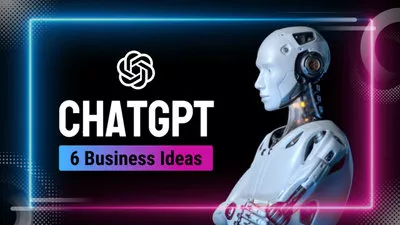
Part 1. The Video Essay Maker We Need
AI tools are changing the way we live, and AI video editors are making video essay creation easier than ever! FlexClip is one of them. It can automatically generate a video essay based on the prompt or essay text you enter.
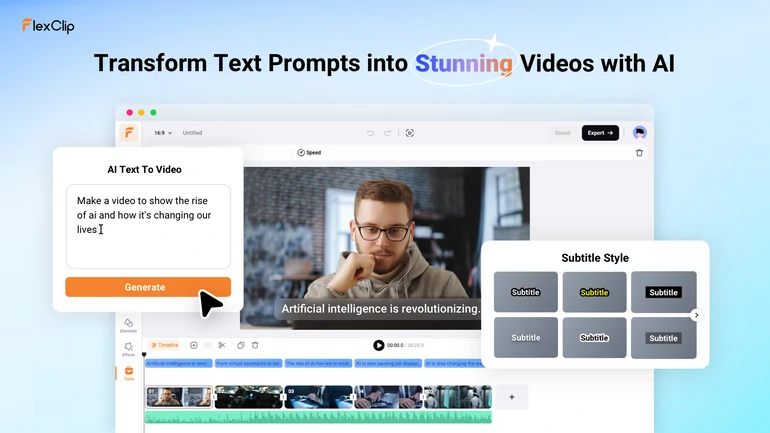
FlexClip Text to Video Overview
Here are more FlexClip can help out:
- Generate excellent text essays with ChatGPT. Tell FlexClip the theme of the video essay, you will get the best-ever AI essay script perfect for video creation.
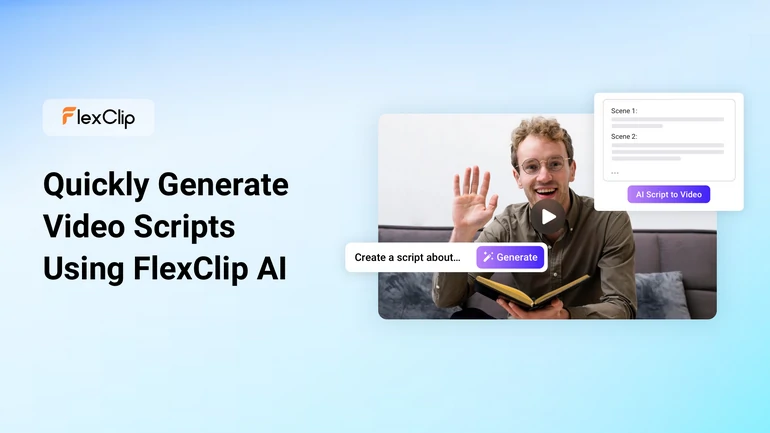
FlexClip Script Writer Overview
- Farewell to robotic AI voiceover. FlexClip’s AI text-to-speech tool reads out anything for you in a natural, melodious voice. 140+ language support, and 400 voices will certainly meet all your needs.
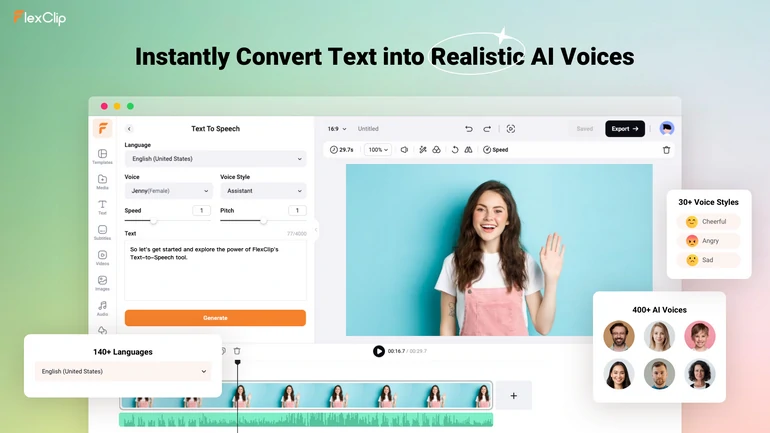
FlexClip Text to Speech Overview
- Authentically translate your video subtitle or voiceover into 60+ languages. Make your video go global and reach more audiences!
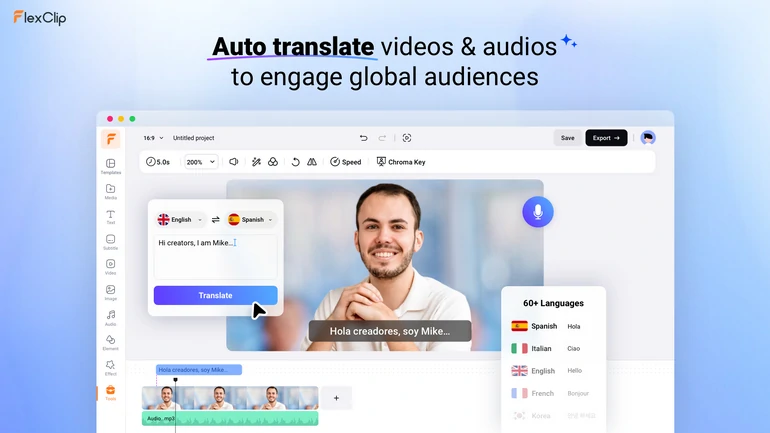
FlexClip Video Translate Overview
- Tons of video essay templates designed by professionals are ready to be edited and personalized. Go to FlexClip’s template page and get more inspiration.

5 Easy Steps to Make a Video Essay
If you are at FlexClip’s editing page, you are only 5 steps away from a satisfying video essay. Let’s get started now!
Step 1. Preparation
Getting organized always makes you more effective, the same applies to video essay creation. You need to put all media resources like music, photos, video clips in one folder.
Do remember to summarize your text essay into a bullet list. Anyway, video essays are not all about details, but about making ideas more digestible.
Next up, visit FlexClip’s media section, click on the Upload files button, and follow the prompt to upload all photos, videos, music from a local folder, cloud services, and mobile device needed for video essay creation.
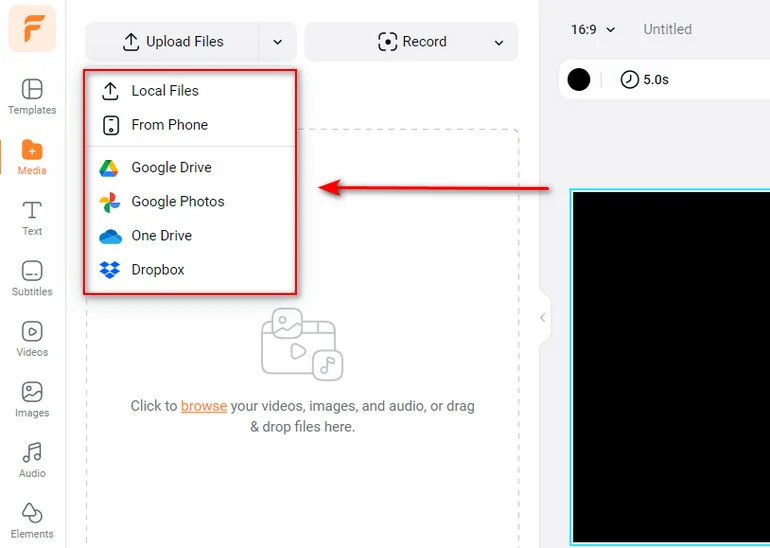
Upload Resources to FlexClip
Step 2. Generate a Video Essay Draft
Once you input your text essay, FlexClip can understand the content, match the content with resources from the stock library, and then use them to create a slideshow. AI will add transitions and filters to those media resources to make everything go smoothly.
Go to Tools > AI Video Generator. Here you can enter a prompt to generate a video, or generate videos from an article or URL. Copy the article content or blog URL to FlexClip, select the subtitle style and hit Generate.
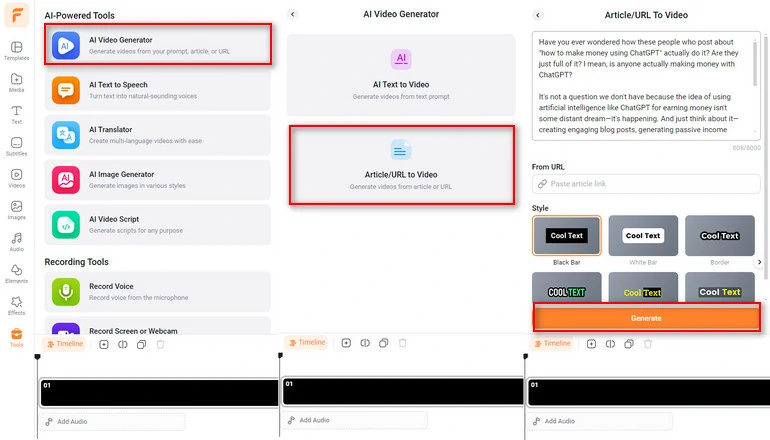
Generate a Video with Text
FlexClip will automatically find the key sentences from the article and match them with media resources. You can deselect or re-select the key sentences, replace the resources, adjust the duration, even manually edit the subtitle content. Hit Add to Timeline to confirm all changes.
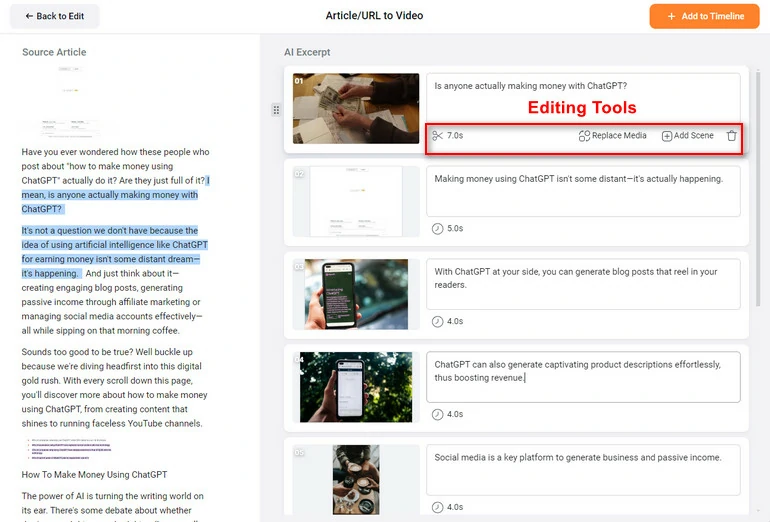
Finish Video Essay Draft
Step 3. Edit the Video Essay
As we mentioned earlier, the AI text-to-video tool only creates a draft video essay. To make your video essay outstanding, you have to make some manual edits. Here are some ideas to edit your video essay.
Click on any item on the scene, all available editing tools will pop up above the preview window. The most frequently used tools include cropping, speed changer, filters, chroma key.
Instead, move to the text section to add more information, find the right background music to replace, or go to the Elements section to enrich your video essay with stickers, interesting GIFs, widgets, etc. All resources are listed on the left-side panel. Feel free to explore.
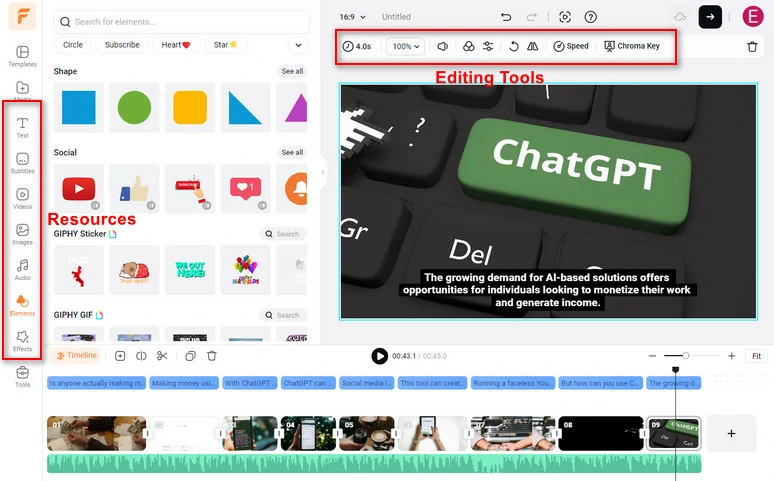
Edit Video Essay
Step 4. Add More AI Touches
Voiceover is an essential part of the video essay. You can record your own voice, but why not grab a cup of coffee and let AI do the job? Select the language, choose a voice, and the voice style you love, set up the speed and pitch, you will soon get a natural AI voiceover.
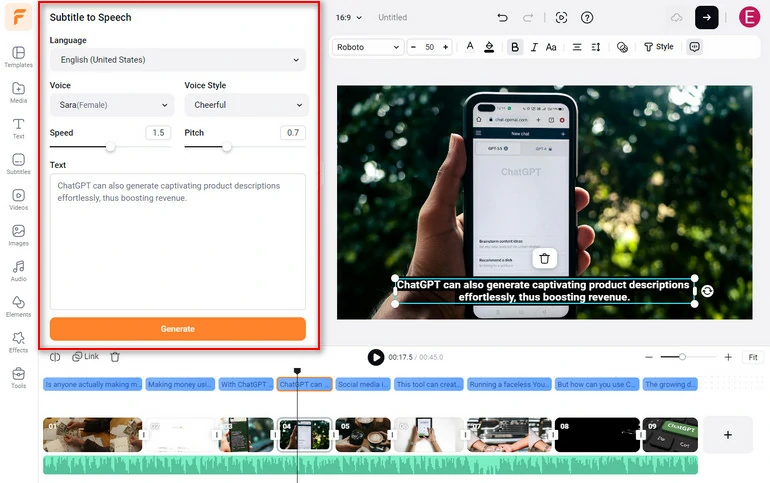
Generate AI Voiceover
Make your video essay go global with authentic translation! FlexClip can help you translate video essay subtitles, translate video audio to audio, and even project text into 60 more languages. Select the target language and let translation begin.
Generate AI Translation
Step 5. Export & Share
Enjoy the ultimate freedom of sharing your video essay at FlexClip. Besides directly downloading to your computer, you can also save the video to cloud services, share the video via a short link, or one-click post to YouTube, TikTok.
Tips for Creating an Excellent Video Essay
Never created one video essay before? Following are 3 must-read tips for making excellent video essays.
- Write Eye-Catching & Strong Video Script
The script is the backbone of your video essay. You should pick a nice topic to make sure you have enough potential viewers, and do thorough research so that your script is trustworthy.
Start with a hook to grab your audience’s attention. Use storytelling techniques and concise sentences to keep them engaged throughout the video.
- High-Quality Footage and Images
Incorporate relevant and high-quality visuals that complement your script. Use original footage, stock footage, and public domain images where applicable at least in 1080P.
Most people will ignore the sound quality. Invest in a quiet environment and a good microphone to minimize background noise. Also, edit your audio to remove any mistakes and pauses.
- Edit for Pacing and Clarity
Edit your video essay to maintain a good pace and ensure clarity. Avoid long, unbroken segments of talking. Instead, use cuts, transitions, and visual changes to keep the audience engaged. You can also edit the video to the music beat.
Frequently Asked Questions
1. what’s the difference between vlog and video essay.
Vlogs are videos showcasing someone’s daily life. Video essays are more like essays in video form. They are used to convey excellent messages and spread information.
2. Can I monetize my video essays?
Yes, you can monetize your video essay through platforms like YouTube by enabling ads, partner programs, offering premium content. Please refer to the social platform’s monetizing policies and guidelines.
3. How do I write a script for a video essay?
Writing a script for a video essay involves extracting the main points from the essay and making it more like spoken sentences. Please keep in mind that the text should accompany the voiceover.

Member of PearlMountain Limited. Has a mania for video editing. Love to share photo/video shooting tips and ideas.
FlexClip Video Maker
The easiest way to help you create custom videos, no design skills needed.
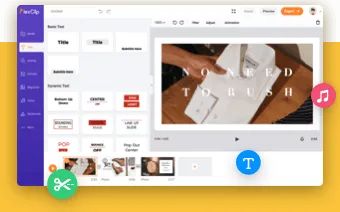
Hot & Trending
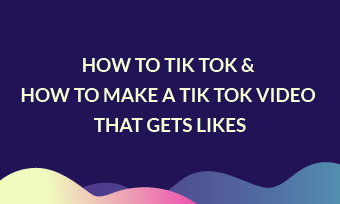
Ultimate Tik Tok Guide – How to Tik Tok & How to Make a Tik Tok Video that Gets Likes
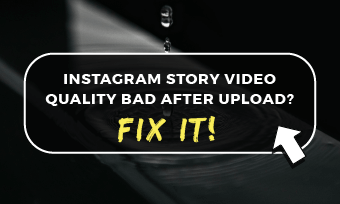
Instagram Story Video Quality Bad After Upload? Fix It!
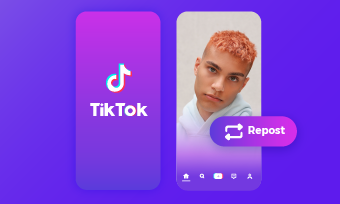
How to Repost Video on TikTok & How to Remove TikTok Repost
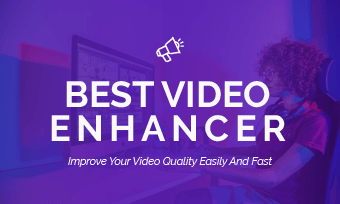
Improve Video Quality Online: 3 AI Video Quality Enhancers You Can't Miss

4K Convert to HD 1080p without Watermark: Best 4k Video Converters

How to Change Face in Video on Phone/Desktop/Online
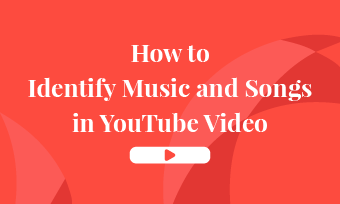
7 Best Ways to Find Music in YouTube Videos
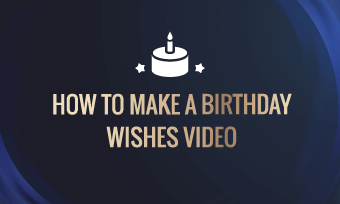
Top 13 Birthday Video Makers with Music and Effects Free
You May Also Be Interested

5 Video Compressor for WhatsApp: Compress & Reduce Videos Size for WhatsApp

Time Photos on TikTok: How to Edit Duration of Photos on TikTok on Phone


4 Easy Steps On How To Make A Video Essay
Just like photo essays and traditional essays, video essays tell a story or make a point. The only difference is that it presents the information or story in video form.
However, how to make a video essay is a general question in today’s time. As the development of technology and easy access to the internet has changed the traditional method of narrating a story through written essays has to be video essays. It is quite easy to connect with people through videos as compared to written essays as you can attract them in both express and implied ways. It has risen as an effective and efficient mode of presenting the information.
Thus, this blog will help you understand how to make a video essay proficiently and the significance of making such an essay. Let’s start by discussing what a video essay is.
What is a video essay?
Table of Contents
The essay is a short formal piece of writing to express one’s thoughts, stories, arguments, and so on. Video essay means narrating the content of an essay in a video through pictures, text, music or narration, etc.
This is why it is a bit challenging to make a videos essay as compared to writing a traditional essay. Hence, the importance of learning how to make a video essay arises.
The following picture shows the steps that will help you get going with your project.
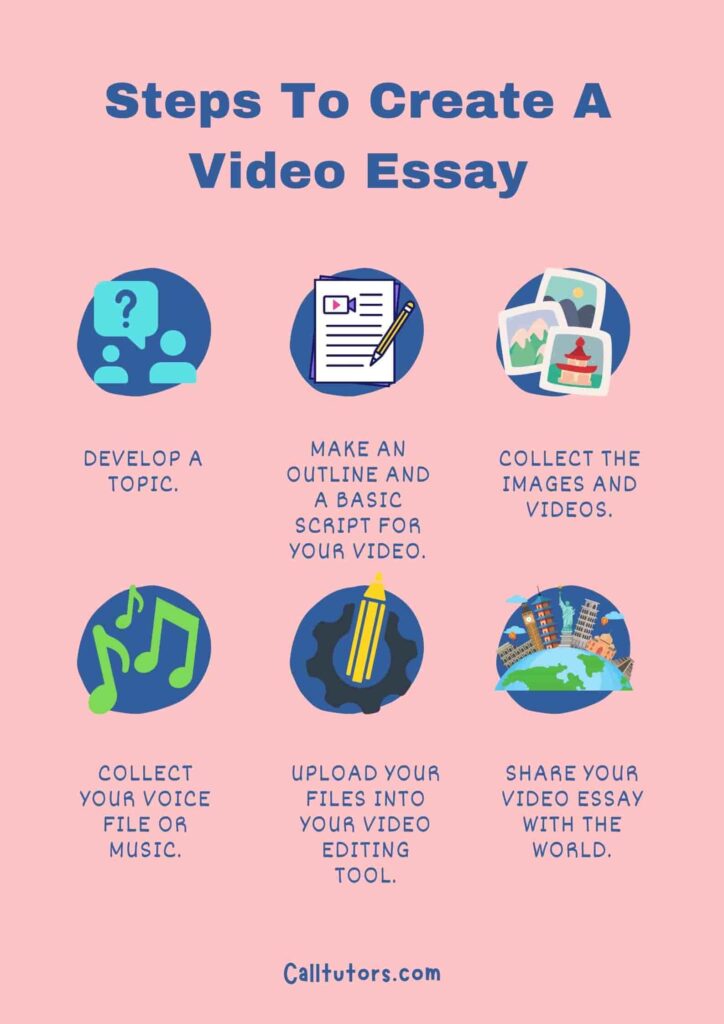
How to make a video essay?
Following are the steps involved in how to make a video essay:
1. Contemplate your topic wisely
- The first and the foremost step in how to make a video essay is to choose a topic for your essays. You can’t jump on to other steps before finalizing your topic. Your topic must address a brief content of the essay. Since it’s a videos essay therefore you have to decide a catchy title with a view to attract and allure your audience.
- While contemplating a topic for the essay you should always keep in mind that the product or content is the second thing but the title is the first thing to tell the audience about the essay.
2. Create a script and structure
- After deciding a topic now you have to create a story from your idea. Since video essays work as written essays, therefore you have to build a story on your idea in an interesting way.
- As in a written essay you have to build a structure and outline to present your story, likewise in a video essay you have to drive a video in three stages beginning, middle, and end.
- This step is very mandatory and has to be observed very cautiously. Create your narration or pictures, text beforehand so that you narrate the actual story in the perfect format.
- As soon as you will make your outline then you can write your script in an efficient and effective manner. Writing a story is an art so make it worth watching.
3. Decide the right clips and images
- By now you have decided your title, outline, and structure for your video essay. Now the next step in how to make a video essay is to choose the right clips and images to tell the story in the best manner.You can create clip by selecting the most relevant parts of your footage and trimming them down to fit your story’s pacing and structure. Additionally, consider using images that help illustrate your points or add visual interest to the video.
- Since this is the best advantage of a videos essay that you can use pictures and clips to share your views so you also have to make the best use of them accordingly.
- Always use only those pictures, clips, and texts which directly suggest your point of view or argument or your experience and so forth.
- To choose the most suitable clips and texts and images you must have a rich library of the same. The rich library will help you to find exactly what you need and want to support each and every point you make and to rebut the point you want to rebut. Conclusively, you will craft a better video.
4. Edit the video into a single essay
- You have everything ready to go and you are only left to collect and merge all the chosen images and footage into a single video to give it a form of narration.
- While editing your video essay you can use any tools related to editing the videos as there are several videos editing too . It will help you to garnish your video in an attractive manner. You can make changes in the video while remembering your targeted audiences.
How long should a video essay be?
A 10-minute video essay that is clear, focused, stylish, and well-crafted is much better than a 60-minute video essay that is loose, vague, obvious, and thrown together. Thus, concerning traditional written essays, the following are the idea of the expected length of a video essay:
| 1500-2000 words | 8-10 minutes |
| 2000-2500 words | 10-15 minutes |
| 4000-6000 words | 15-20 minutes |
Bonus Point
What are the best video editors.
Following are the best video editors that are free of cost:
(i) Lightworks: It is the best free choice for those who want to create professional-quality movies or videos without spending a penny.
(ii) Hitfilm express: It is also free-to-use video editing software. This software adjusts color balance, trim clips, and exports your projects in different video formats.
(iii) Movie Maker Online: It is a video editor that runs in your browser. to edit a video, you have to upload an unusual vertical project timeline where you can crop clops and add filters or transition effects.
(iiii) Canva: Canva is renowned for offering tens of thousands of templates in every format imaginable for use on every publishing platform. The features that make Canva video editor a fun, special, and effective tool include real-time collaboration, self-recording plus screen recording that is ideal for classes, training, and webinars, pre-licensed audio tracks, content planner, and publisher, as well as brand kit and colors. Canva’s video editor is also accessible on your browser (for online editing), desktop download (if you want offline editing), and mobile (iOS and Android).
(v) Vmaker AI: An easy-to-use AI video editor that turns your raw video footage into professional-looking videos in just one click. It automatically adds B-rolls, background music, transitions, effects, subtitles, intros, outros, and more, making your videos publish-ready with one click. Vmaker AI transforms long-form videos into short-form content and also creates highlights and teasers from your videos. What sets Vmaker AI apart is its feature-packed, full-fledged editing suite that lets the pros craft their videos to perfection.
If you are well versed with this blog, then sure, you know how to make a video essay efficiently and effectively.
Video Essay As Form Of Marketing
The video essay is the latest popular style of essay in which a short video is made to narrate a story or anything as per the genre of the essay. That is why it has emerged as an effective tool of marketing as now companies can sell advertises their products through video essays instead of advertisement videos. This is more efficient than traditional advertisements because it does not directly intend to do marketing. Instead, it depicts the importance of the product through pictures, video clips or story narration, etc. But all this is possible only when you know how to make a video essay.
Quick Links
- The Complete List Of Cause And Effect Essay Topics
- How To Write An Essay Plan?
With the emergence of technology and awareness of technology in people, the method of academics has completely changed and video essay is one of the modern aspects. In video essays, You can create clip by selecting the most relevant parts of your footage and trimming them down to fit your story’s pacing and structure. Additionally, consider using images that help illustrate your points or add visual interest to the video. It has also become a tool of digital marketing owing to its advantages. But all this is possible only when you know how to make video essays and all the guidelines thereto. It will help to make a good video essay.
Hope you have found out from the above information how to make a video essay, but if you still have any doubts, then you can help from our experts through essay writing help , write essay for me in a very short period, and how to write my essay in an easy way.
What Makes A Video Essay Great?
According to Max Marriner, intellectual accessibility, genuine or hard-hitting evidence, and an engaging host are key formulas for making a good video essay.
Who Made The First Video Essay?
Mathew Turner created a viral youtube essay arguing that Daniel LaRusso, the young hero of the 1984 film, The Karate Kid, was actually the movie’s villain. You first need to know the story behind the video he posted to youtube.
How Do You Structure A Video Essay?
The video essay will have the same features as an essay; an introduction, argument, discussion, and conclusion. Students should be enabled to approach the development of the video essay in the same way as their academic essays; research, write, plan, prepare, edit, and submit.
Similar Articles

13 Best Tips To Write An Assignment
Whenever the new semester starts, you will get a lot of assignment writing tasks. Now you enter the new academic…

How To Do Homework Fast – 11 Tips To Do Homework Fast
Homework is one of the most important parts that have to be done by students. It has been around for…
Leave a Comment Cancel Reply
Your email address will not be published. Required fields are marked *
This site uses Akismet to reduce spam. Learn how your comment data is processed .
- Login / Sign Up
- Polygon Picks
- Polygon Lists
- What to Watch
The best video essays of 2023
Get smarter with your entertainment
by Daniel Schindel
If you buy something from a Polygon link, Vox Media may earn a commission. See our ethics statement.

Looking at the year’s notable video essays, many grapple with issues at the heart of contemporary media itself. There are dissections of video-playing tools, exposés of how corporations restrict access, contrasts between tropes and reality, and thorough investigations of trends in plagiarism and/or fabrication. As the essay landscape refines, it seems to peer inward as much as out.
On the making of this list: I’ve been trying to stay up to date on video essays for a while, and have been contributing to lists and/or voting in polls about the best videos made each year since 2018. Over this time, doing these kinds of roundups has gotten exponentially more difficult. As YouTube has grown to become a mega-business hosting powerful creators (part of the general trend of social media video sites becoming the new primary forum for cultural influence), I’ve seen essayists I once thought of as niche accrue follower counts in the millions. It’s been surreal. For this year’s list, I tried to shake things up by keeping the essayists who have appeared in previous editions to a minimum, along with the usual considerations about incorporating a diversity of creator backgrounds and video style. Once again, the videos are presented simply in order of publishing date.
[Also, I’m going to preface this with a mega mea culpa: It was absolute malpractice of me to not include Platformer Toolkit by Game Maker’s Toolkit in the best video essays of 2022 list . I don’t have a good excuse, either; I just straight up missed the essay at the time it came out, and then overlooked it during my catch-up phase at the end of the year. But an essay about game design that instructs you on its ideas by letting you actively engage with them through interactivity feels like a breakthrough in the form.]
Practices of Viewing by Johannes Binotto
Johannes Binotto is a Swiss researcher and lecturer who has been adding to his “Practices of Viewing” series for several years now, and every installment preceding 2023’s videos, “Ending” and “Description,” is well worth checking out. With each essay, Binotto examines a specific element of the media viewing interface, and how they affect an audience’s engagement with it. Some subjects, like fast-forwarding, pausing, or muting, may seem like obvious touchstones, while others, like sleep, are more out-there approaches to the conversation.
A History of the World According to Getty Images by Richard Misek
This technically debuted last year, making the rounds at film festivals, but it was made available online this past spring, so I’m including it here. A History of the World According to Getty Images is a great example of a work embedding its own ethos into its construction. Misek, another academic, is scrutinizing how for-profit companies (specifically Getty Images) mediate information that’s supposed to be available for all. In practice, a great deal of visual material that’s technically in the public domain can only be accessed in decent quality by paying an archive like Getty. Misek circumvents this by paying the fee to use select footage in this essay and then making this essay itself available for anyone to cite and clip from, putting that footage out into the world for real.
The Faces of Black Conservatism by F.D Signifier
I feel that video essays that consist mainly of the creator talking directly into a camera stretch the definition of the term – to me, the best cinematic and argumentative potential of the form lies in the power of editing. F.D Signifier’s contrast between fictional depictions of Black conservatives and the reality of how they appear across media exemplifies is what sets him apart in this genre: not just the depth of his thought (though it is considerable), but also the playful ways in which he presents the objects of his discussion. The running gag here in which he films himself holding hairstyling tools over the heads of various people on his screen had me laughing harder with each appearance.
Games That Don’t Fake the Space by Jacob Geller/Why We Can’t Stop Mapping Elden Ring by Ren or Raven
I don’t actually think this is the best essay Jacob Geller released this year (that would be either “Games that Aren’t Games” or “How Can We Bear to Throw Anything Away?” ), but it pairs so incredibly well with Renata Price’s essay (an impressive video debut building on her experience as a games critic) that it felt more appropriate to present them as a double feature. Both videos are sharp examinations of the ways that video games conjure physical space. Geller illuminates the shortcuts and tricks games often employ through examples of ones that, as the title suggests, don’t use such devices, while Price analyzes the impulses beneath what one could call the “cartographic instinct” in open-world games.
Why Do Brands Keep Doing These Crazy Influencer Trips?? by Mina Le
It’s been encouraging in recent years to see Le grow more confident in her mixing of media in her videos on fashion and film/television. You might remember the controversy around Shein granting influencers a limited hangout in a clothing factory this past summer. Le contextualizes this story by delving into the wider, supremely odd world of sponsored tours. If you watch this on your phone, the transitions between Le speaking to the camera and the clips of TikToks and other videos and photos flow together in a manner not unlike how one would scroll a social media feed, creating queasy resonance between message and medium.
Feeling Cynical About Barbie by Broey Deschanel / The Plastic Feminism of Barbie by Verilybitchie
I present these two videos not as a contrarian attack on Barbie (a film I enjoyed), but to highlight the important role of considered critical voices that dissent against prevailing opinions. Both Maia Wyman and Verity Ritchie unpack the issues with a heavily corporate product attempting to capitalize on feminist sentiment. Ritchie emphasizes the history of Barbie the brand and how the movie fits into it, while Wyman reads more into the specifics of the film’s plot. Together these videos do a good job of elaborating on legendary critic Amy Taubin’s Barbie reaction : “It’s about a fucking doll !’”
TikTok Gave Me Autism: The Politics of Self Diagnosis by Alexander Avila
There’s a lot of social media discourse over who can and can’t — and should or shouldn’t — claim the label of “autistic.” As someone who’s struggled with both the logistics and appropriateness of sussing out whether I’m on the spectrum, this video hit me hard. There are parts that feel like they veer so far into philosophical query that they threaten to obfuscate rather than elucidate the subject, but the essay as a whole is undeniably compelling. Avila’s own confessed stake in the question of self-diagnosis is itself affecting. This is the most searingly personal video on this list, uniting self-inquiry with rigorous research.
Chaste/Unchaste by Maryam Tafakory
This years shortest entry is a deceptively simple interrogation of the concept of “chastity” as defined by Iranian censorship standards. Takafory is a veteran of the academic essay scene, and I’m delighted by the opportunity to present her work to a wider audience. The video’s text is minimal, and its visuals are simply a montage of clips from Iranian films, but the implicit question of propriety grips the viewer with each cut.
Journey to Epcot Center: A Symphonic History by Defunctland
This is the most boundary-pushing essay on this year’s list. Completely lacking commentary, it instead emphasizes visuals and reenactment in telling the story of how Disney’s Epcot park went from concept to realization over the decades. Kevin Perjurer also provides a detailed set of notes that are meant to be read along with watching the video, further demanding one’s full attention. This is a direct acknowledgement of how we use the internet, the windowed experience of browsing and watching videos. I don’t think everything works; many of the reenactments, while impressively professional, feel somewhat redundant. But I’d prefer a creator take big swings that result in a few flaws rather than play it safe, and I hope both Perjurer and others continue in such an experimental vein.
Plagiarism and You(Tube) by Hbomberguy
Harry Brewis is popular enough that he doesn’t need any boost, but even in the very brief period since this video’s release as of the time of writing, Plagiarism and You(Tube) has made seismic impact on the YouTuber scene . Does it need to be almost four hours long? Maybe not. Yet the sheer volume of evidence it pulls together to support various accusations of plagiarism does seem vital. The main focus of the piece, James Somerton, went into lockdown over the fairly comprehensive evidence presented against him (and has since attempted to apologize ). I’m seeing conversations flourish around the endemic problem of plagiarism on the internet and what is to be done about it, and a surge of creators recognizing and calling out others who have taken their work without credit. There’s a deeper issue at play here, which is that the growth of YouTube entertainment has come with a truly daunting mountain of crap content that nonetheless attracts views (and thus dollars).
On the subject of low quality standards on YouTube, beyond plagiarism, Todd in the Shadows’ recent exhaustive effort to fact-check various false claims Somerton has made in his work is a useful supplement to this video.
- Best of the Year
- Entertainment
- Special Issues
More in Polygon’s Best of the Year 2023

Most Popular
- The big games, reveals, and trailers from Gamescom Opening Night Live 2024
- All-New Venom kicks off a high-stakes Marvel mystery later this year
- The Fade is a magical coming-of-age adventure by Dimension 20’s Aabria Iyengar
- Shadow the Hedgehog is Venom now
- PUBG dev's new life sim looks like The Sims with a dash of GTA
Patch Notes
The best of Polygon in your inbox, every Friday.
This is the title for the native ad
More in What to Watch

The Latest ⚡️
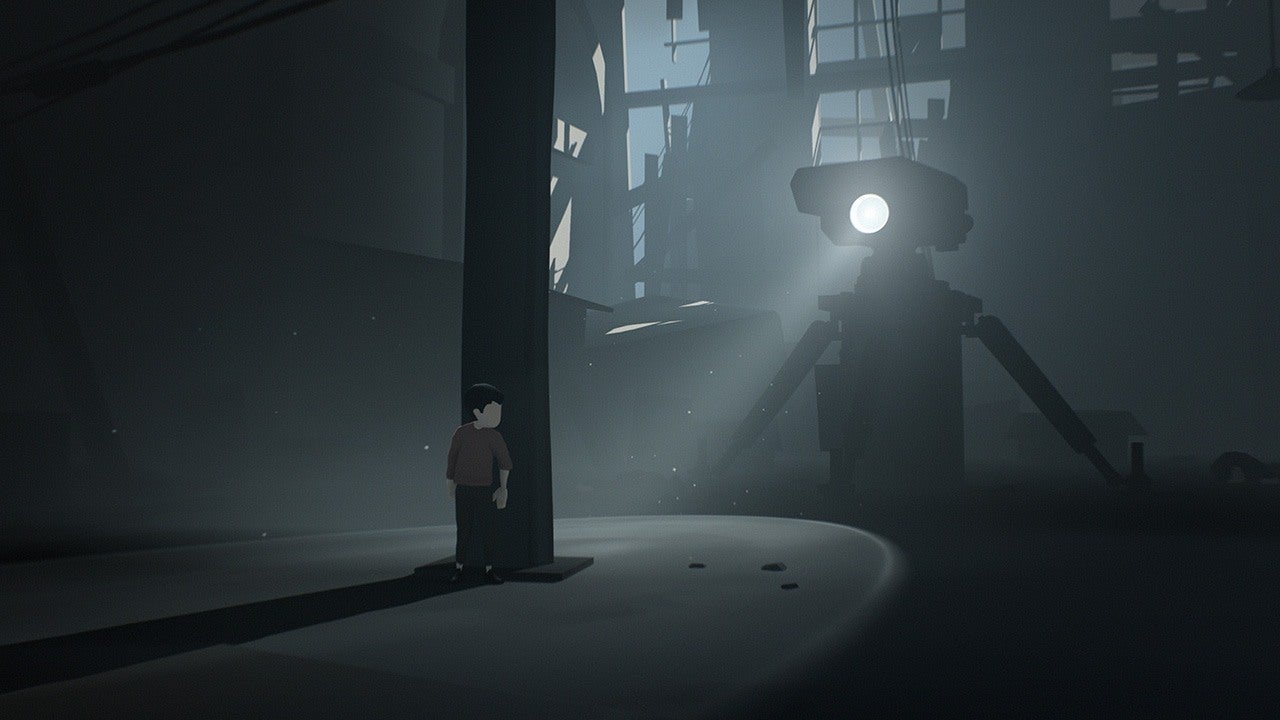
Video Essay Projects
- 16 Aug 2023
- By Steve Gotzler
The capstone assignment for this course will be a video essay project that we will screen together as a class at the end of the semester and publish online. These essays will showcase our various explorations of, and interventions in, the study of video games and narrative cinema.
Students will use these video essay project to make original arguments about the interpenetrated histories, forms, and/or genres of video games and narrative cinema, drawing on primary sources drawn from the course syllabus and conducting secondary research on their own. in the process, we will work together to craft visual arguments about the visual media examined in the class., throughout the semester we will scaffold this assignment with additional technical instruction and tutorials, by viewing and analyzing other video essays as models, and working in groups to provide feedback and advice on composition, editing, and revision of these projects., phase 1: ideation and modeling, phase 2: storyboarding and script-drafting, phase 3: assembly, editing, and revision.
In the first phase of this project, students will view several sample video essays, and spend time in class discussing them. These samples will be analyzed as variable samples of the genre, and will form the basis of a collaborative ideation exercise to facilitate brainstorming ideas for possible video essays. This initial period of ideation will be followed by the submission of a formal proposal at the end of Unit 2. The proposal will identify a topical focus for their essay, and explain its relevance to the course.
Collaborative Ideation Workshop
Before attending class in week 5 students should complete the following:
- View the sample video essay “Frames of Mind” by Jordan Tynes and Maurizio Viano
- View the sample video essay “Special Effectivities” by Ian Bryce Jones
- View the sample video essay “Tarkovsky/This Side of the Screen” by Rick Warner
- View the sample video essay “Avatar in the Machine: The Fracture of Avatarial Identity in SUPERHOT ” by Ben van Welzen
Video Essay Proposals
All students will submit a formal proposal for their video essay projects by Wednesday, October 18th.
Video Essay Proposals should be no more than 2-3 pages in length (incl. timeline), and must address each of the following three areas:
(1) A description of the student’s project choice — should offer an overview of the student’s choice of project, by clearly indicating the focus of the essay (e.g., theoretical, historical, formal), giving a brief description of the project’s intellectual purpose and the scope of its deliverables. (~125 words)
(2) A justification of the project’s relevance to the course aims and content — should discuss the relevance of the topical focus and its purpose to our ongoing course conversations regarding video games and narrative cinema. Should mention any relevant primary sources (i.e., films, games), as well as secondary sources (i.e., scholarly books, articles, or essays). (~125 words)
(3) A preliminary outline of a plan of work with a timeline for completing the project — should lay out a feasible and thoughtful plan for undertaking the work necessary to complete the video essay. (.5-1 pg table/chart)
These plans need not follow any single format, and in fact, should ideally be tailored to the needs and schedule of the individual who creates them. However, in general they should include provisions for several phases of work including:
Pre-Production: preliminary research, outlining, story-boarding
Production: script composition, gameplay capture & film clip citations, audio recording Post-Production: audio and visual editing, rough cut submission and final revisions
PLEASE NOTE: Upon review, students may be asked to revise and resubmit their proposals if any of these areas have not been adequately addressed.
Proposals will be submitted via Canvas
In the second phase of the project, students will begin gathering appropriate film and gameplay clips, storyboarding their essay projects, and composing a draft of their scripts. This phase will be supported by a video essay composition workshop in class on Monday, November 13th, and will culminate in the submission of a rough storyboard and draft script.
Storyboard and Draft Script
All students will submit a rough story board, and draft script for their video essay projects by Wednesday, November 17th.
These should be assembled as a single document (either PDF or word document) and must contain each of the following elements:
Storyboard — a storyboard file, integrating visual content blocking (media clips), chunked descriptive outline of scripted content to be recorded in voice-over, and any planned additional audio features (e.g., music, sound effects, or audio only clips from film/games). (~1-3 pages)
Draft Script— a complete rough draft of the scripted dialogue that you will incorporate as voice-over for the essay. (500-700 words)
For our scripts, we want to maximize depth over breadth. As such, analytical focus is paramount to crafting a effective script. The visual components of your composition should do as much, or more, argumentative work as your spoken words, (e.g., illustrating key concepts, demonstrating comparative frames, justifying analytical claims).
In an essay of this length, scripts should strive for a synthesis of secondary texts and primary examples within the following scope.
Draft Scripts Should:
- identify and illustrate 1 observed pattern of textual detail and/or gamic action
- introduce and explain 1 insight drawn from secondary research
- elaborate and demonstrate 1 theoretical/critical concept
- Bibliography — A complete bibliography of all works cited (primary and secondary) in the video essay, formatted according to MLA style, as well as a list of all film, and games to be used in the composition of the video essay.
PLEASE NOTE: Upon review, students may be asked to hold a follow-up conference with their TA in order to address any potential bottlenecks, or problems.
Storyboards and Draft Scripts will be submitted via Canvas
In the final phase of the project, students will attend an instructional session with the Media & Design Center to familiarize themselves with the video production and editing tools available in the Adobe software suite. Following this session, students will assemble a rough cut of their video essay projects, offer constructive feedback to each other through peer review, and engage in iterative composition practices to refine and revise their video essays prior to submission. These activites will be conducted through a series of in-class workshops during weeks 15 and 16.
Instructional Session with the Media & Design Center
Students should come to this session with their laptops ready to use with appropriate software installed. Students should also feel free to bring specific questions about particular video composition techniques (e.g., textual overlay; small multiples; side-by-side; or diagrammatic overlays) that they are interested in incorporating into their video essay projects.
Before attending the instructional session students should complete the following:
- Review “Premier Pro Quickstart Guide”
You should leave this instructional session feeling confident to continue experimenting with Adobe Premier by beginning to assemble your own essays, with self-guided reference to MDC materials.
This instructional session will be held during the our normal class time on Monday 11/27
Media Capture & Assembly Workshop
Our first editing workshop will take place on Tuesday, April 18th. Students should come to this session with their laptops ready to use with appropriate software installed. In class, students will begin working towards a complete rough cut assembly of their video essay projects.
In this session students will:
- discuss voice over recording logistics, and make plans for recording.
- re-visit and expand work timelines from proposal for final phase.
- begin assembling the rough cut of their video essay.
By the end of this session students should have:
- created a new Premier Pro Project for their video essays.
- imported their media library into Premier.
- completed editorial assembly of at least 1 section of the essay (i.e., rough cutting and timing of 90-120 sec.).
A complete assembled rough cut is due by 3:35PM on Monday, December 4th.
Rough Cuts will be submitted via Canvas
Peer Review Editorial Workshop
Our second editing workshop will take place on Monday, December 4th. Students should come to this session with their complete rough cuts assembled and submitted via canvas. In class, students will work in small groups to view each other’s essays and offer peer review feedback for revision and further editing.
- share progress with their peers, and view peer rough cuts.
- generate insights, both practical and critical, for making iterative editorial changes.
- collaboratively plan a timeline for revision and final submission.
- viewed and offered critical feedback on at least 3 other video essays by their peers.
- recieved critical feedback on their video essay rough cuts from at least 3 of their peers.
- generated a revision plan outlining specific edits and change notes for final cuts.
There will also be time during this session to schedule time for instructor follow-up during office hours.
A complete revised final cut is due at: date/tme TBD .
Final Cuts will be submitted via Canvas
Contact & Office Hours
Check the course canvas shell for direct access to course files.
To request a meeting or reach out with questions contact me directly at [email protected] .
Office Hours: Tue 3:00PM-4:00PM (GL 313) | Wed 10:00AM-12:00PM (GL 313).
Share this story
- Browse Business Schools
- MBA Articles
- MBA Info Events
- MBA Admissions Consultants
- MBA Rankings
- Top 10 Lists
- MBA Scholarships
- MBA Discussions
- Application Tracker
- Advanced MBA Search
- UK / Ireland
- Australia / New Zealand
- Canada & Latin America
- Africa / Middle East
By Specialization
- General MBA Programs
- Business Analytics and Big Data
- Energy and Natural Resources
- Entrepreneurship
- Healthcare / Pharma / Biotech
- Information Technology (IT)
All Resources
How to ace your mba video essay.

MBA video essays are increasingly popular, and they give admissions committees a different way to engage with potential applicants. When you apply to an MBA program, you might be required to submit a video instead of a traditional written essay. The specific video essay requirements will vary by school, but these tips can help you to create a quality video for your MBA application.
Consider why video essays are valuable
Understanding why schools use video essays can help you to deliver the content that the admissions committee wants to see. Oren Margolis, a former Senior Associate Director of MBA Admissions at NYU Stern, is currently an MBA admissions consultant and founder of Pinetree & Palm Consulting. He explains that video essays allow applicants to show a level of dimensionality that can’t be conveyed with a written essay.
“By viewing a candidate on video, admissions committees are able to get a feel for their ability to articulate themselves, their goals, and their values,” he explains. He notes that a video can also give the committee a sense about your professional polish, your English language skills, and your ability to think on your feet.
Set yourself up for success
Maria Wich-Vila, an expert MBA admissions consultant and founder of ApplicantLab, recommends that applicants spend some time perfecting their video setup. She notes that it’s best to have a lamp or light source directly in front of you. It’s also essential to avoid having any light source, like a window, behind you, which can create strong shadows.
“Don’t forget that sound quality is very important,” says Wich-Vila. “Use a microphone!” Using a microphone can also help reduce background noise.
Additionally, use the rule of thirds to position yourself on camera. Your eyes should be about a third of the way down the screen, and your body should be cantered from left to right.
You’ll also need to carefully choose your outfit. “It’s always better to overdress, versus underdress,” Margolis cautions. “I recommend business attire, even if it feels a little strange to put on a full suit while sitting at home.”
Prepare your responses
While recording your video, you may have to respond to unexpected or spontaneous questions. Resist the temptation to memorize answers to questions, since these answers can feel robotic. Instead, Wich-Vila recommends you familiarize yourself with the types of questions the school may ask. “Prepare “Swiss Army knife stories” that have different angles that you can pull out or utilize to answer many different possible questions.”
For example, you could use a Swiss Army knife story about your leadership experience to answer questions like “When were you a leader?” or “When were you on a team that wasn’t working together well?” or “Talk about a time that you failed.”
Practice your video
Wich-Vila encourages applicants to practice their videos to get a sense of the timing involved. You can do this using your webcam or the camera on your phone, as well as a timer. “Think for 30 seconds, then give your answer for 90 seconds is a very unnatural way to speak,” she explains. “First practice just saying something, anything, for exactly 90 seconds, or however long the answer is,” she says. From there, you can start practicing using question banks; read the question, think about your response, and then deliver your response in the allotted time.
While it’s important to get comfortable with the video essay format, Wich-Vila cautions again against over-preparing to the point where you’re starting to memorize answers. “Think likability over accuracy,” she says. “That is, I’d rather watch an answer from someone who is warm and friendly, even if they make some mistakes, versus a “perfect” answer from someone who sounds like a robot.”
Related Business Schools

Calculating the Value of an MBA
Aug 09, 2024
More MBA News
More MBA Articles

MBA Programs with a Focus on Sustainability and Social Impact
Aug 13, 2024
In recent years, the business world has shifted toward sustainability and social responsibility. And many MBA programs have responded accordingly.
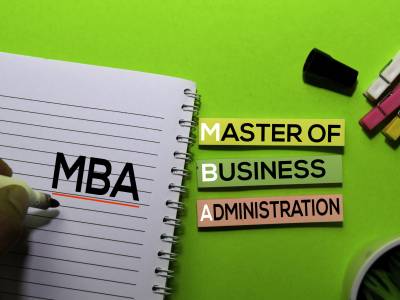
Four New MBA Programs Launching in 2024
Aug 07, 2024
The world’s leading business schools continue to launch new MBA degree programs. Expanding choice for prospective students, the supply of MBA programs continues to grow.

Understanding the GRE for MBA Admissions
Aug 01, 2024
Would-be MBA students have multiple options for their standardized tests. One of the most popular is the Graduate Record Examination. So what is the GRE?
More Articles
Related Top 10 Lists

More Top 10 Lists
- NYU - Stern

- Terms of Use
- Cookie Policy
- Privacy Policy
Information
- Featured MBA Programs
- Online MBA Programs
- Executive Courses
- MiM Programs
- LLM Programs
Search MBA Programs
Go to Advanced Search
Subscribe to the FIND MBA Newsletter
Receive the latest news and tips
© 2001–2024 Pritzwalks – FIND MBA – Master of Business Administration (MBA) Programs Worldwide
Watch CBS News
Watch: Kenan Thompson slams Project 2025 at DNC
Advertisement
Trump Wants to Distance Himself From Project 2025. Democrats Are Trying Not to Let Him.
The conservative policy proposal has been front and center at the Democratic convention this week, as Democrats look to tie the controversial document to the former president.
- Share full article
Kenan Thompson, the comedian and actor, walked onstage with a large prop book that said “Project 2025” on its cover at the Democratic National Convention.
This is Project 2025, the Republican blueprint for a second Trump term. You ever seen a document that could kill a small animal and democracy at the same time? Well, these are the terms and conditions of a second Trump presidency. You vote for him. You vote for all of this. Let’s take a look. Project 2025 calls for the elimination of protections for L.G.B.T.Q.+ Americans. Project 2025 calls for millions of people like yourself to pay more for prescription drugs like insulin. Project 2025 resurrects a law from the 1800s called the Comstock Act to ban abortion nationwide and throw health care providers in jail. Everything that we just talked about is very real. It is in this book. You can stop it from ever happening by electing Kamala Harris as the next president of the United States.

By Jazmine Ulloa and Alyce McFadden
Reporting from the Democratic National Convention in Chicago
- Published Aug. 21, 2024 Updated Aug. 22, 2024, 2:02 a.m. ET
Kenan Thompson, the longest-tenured cast member in “Saturday Night Live” history, strode on to the stage on Wednesday night with an oversize book and thumped it heavily onto the lectern: an exaggerated version of Project 2025, a controversial set of conservative policy proposals outlining an agenda for the next Republican president that Democrats have brandished all week.
“Y’all remember this big old book, from before?” Mr. Thompson asked to roars of laughter from the auditorium. “You ever see a document that could kill a small animal and democracy at the same time? Here it is.”
Former President Donald J. Trump himself is not behind Project 2025, and he and his running mate, JD Vance, have been seeking to distance themselves from the specifics inside the 900-page plan .
But that has not stopped Democrats from wielding it as cudgel. Speaker after speaker has referenced the blueprint in Chicago this week, underscoring its sweeping proposals to reshape the federal government, curb abortion rights and climate protections, and drastically reduce immigration into the United States.
“If Donald Trump has his way, he’s going to push through their extreme agenda — Project 1825,” Senator Cory Booker of New Jersey said on Wednesday, joking about what Democrats have called its backward policy. “I mean — I’m sorry. I’m sorry. I roll that back. I got that wrong. Project 1925 — oh, I’m sorry. I’m sorry. Project 2025.”
Onstage later, Mr. Thompson took calls from several regular Americans who appeared on a screen behind him. He riffed about how their lives would fare under the policy proposals in the book. The bit got off to a bumpy start when Matt, an A.V. tech from Nevada was, perhaps ironically, muted.
We are having trouble retrieving the article content.
Please enable JavaScript in your browser settings.
Thank you for your patience while we verify access. If you are in Reader mode please exit and log into your Times account, or subscribe for all of The Times.
Thank you for your patience while we verify access.
Already a subscriber? Log in .
Want all of The Times? Subscribe .
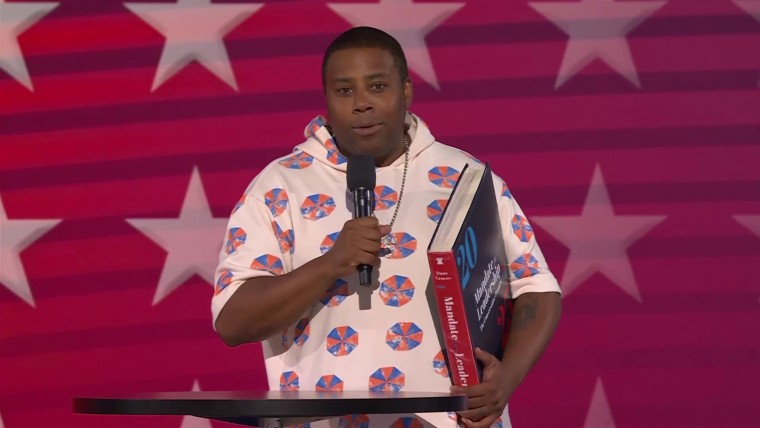
'I know guns': Walz touts responsible gun ownership during DNC speech
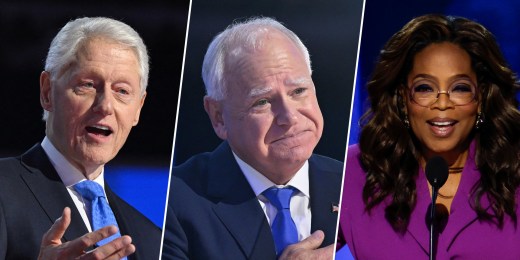
Watch highlights from Night 3 of the Democratic National Convention in 3 minutes

Walz in acceptance speech: 'Never underestimate a public school teacher'
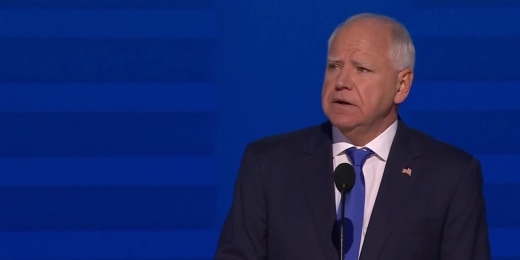
'We're not going back': Walz pushes back against Trump and Project 2025
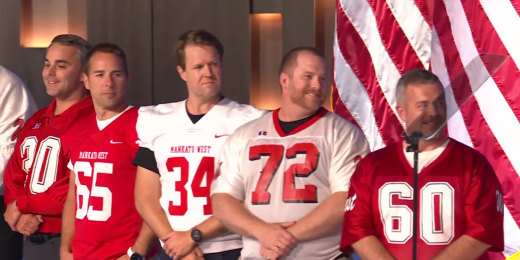
Former students of Gov. Walz praise his leadership as a teacher, coach
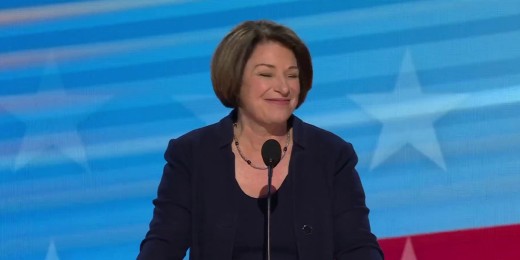
'We love a dad in plaid’: Sen Klobuchar praises Gov. Tim Walz
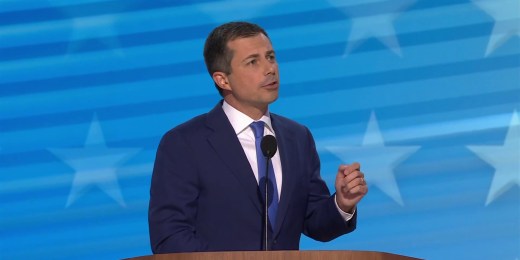
Pete Buttigieg: 'We can choose a better politics'
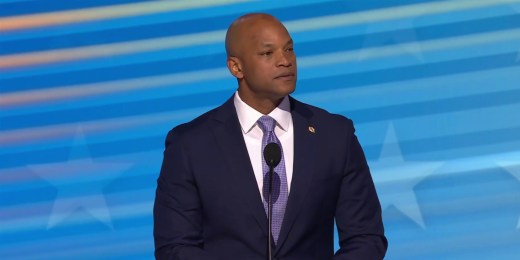
Gov. Wes Moore honors workers killed in bridge collapse at DNC
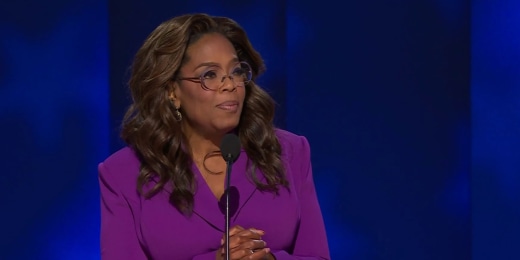
Oprah endorses Harris and appeals to independent voters at DNC
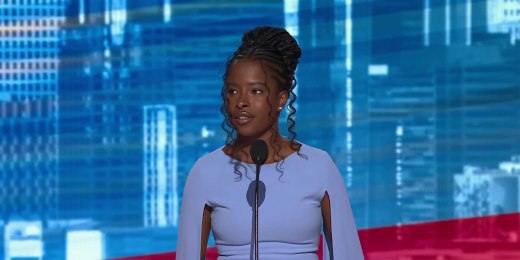
Amanda Gorman revives 'the audacity of hope' in new poem
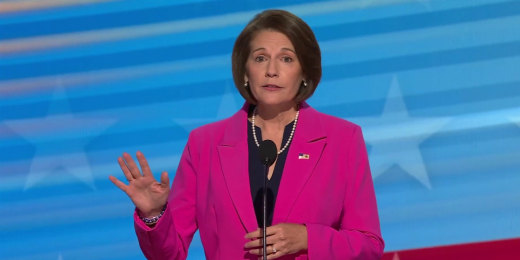
Sen. Catherine Cortez Masto recalls Harris as a 'leader' while attorney general
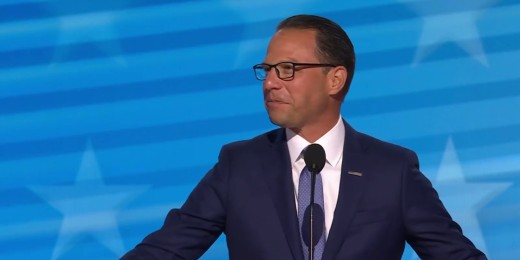
Pennsylvania Gov. Shapiro says Democrats are the party of 'real freedom' at the DNC
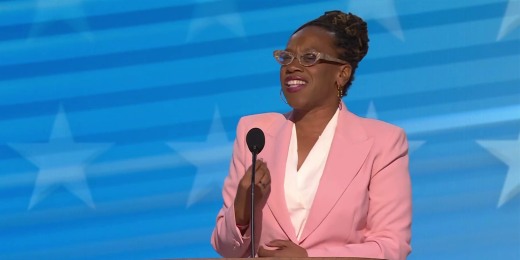
'She is the best among us': California Congress candidate praises Harris
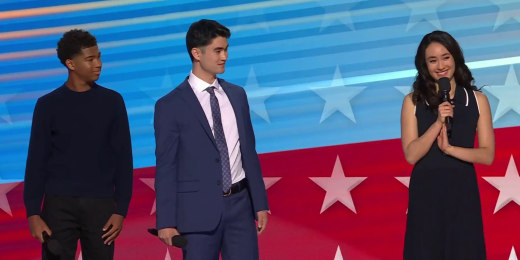
Harris' niece and nephews support their aunt in DNC remarks
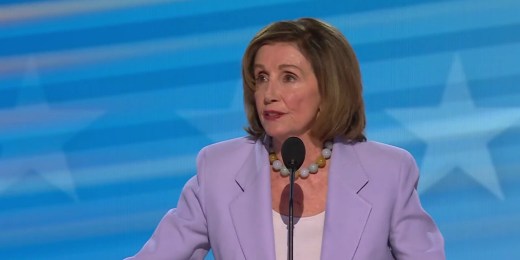
Pelosi: Harris and Walz will 'take us to new heights'

Bill Clinton says we need 'the president of joy' Kamala Harris
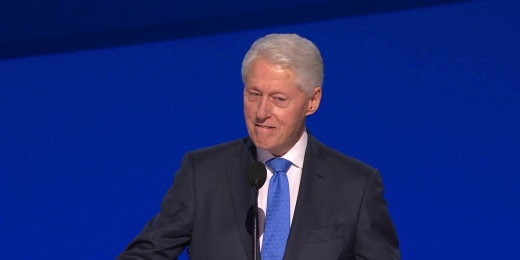
Clinton praises President Biden’s accomplishments at DNC
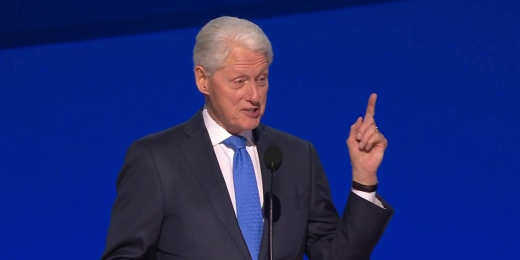
Bill Clinton: 'I'm still younger than Donald Trump'
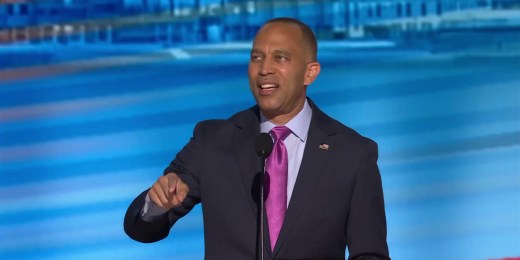
Hakeem Jeffries: Donald Trump is like an 'ex-boyfriend' we broke up with for a reason
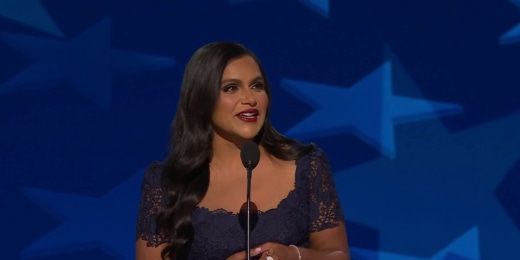
Mindy Kaling reflects on bonding with Harris over South Indian food
Nbc news now, kenan thompson warns voters of project 2025.
“Saturday Night Live” actor Kenan Thompson brought a giant book on stage at the Democratic National Convention to represent Project 2025. Kenan highlighted several points in the document that include a ban on abortion, elimination of LGBTQ + rights, and the elimination of the Department of Education Aug. 22, 2024
Best of NBC News
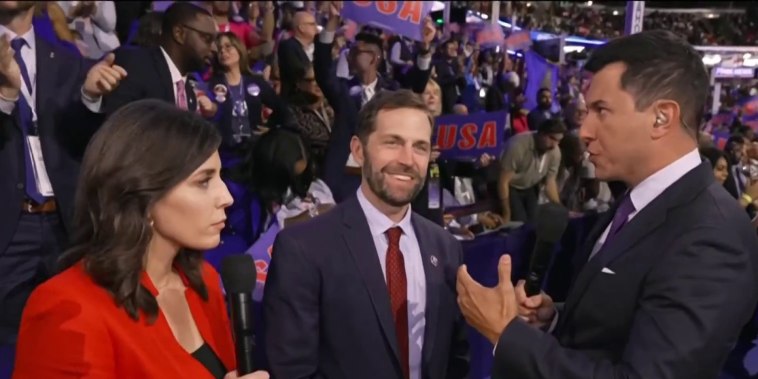
Rep. Jason Crow describes his concerns about threats to democracy
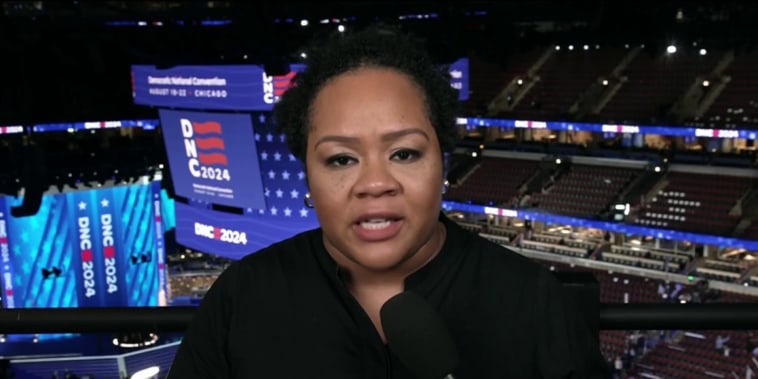
What to expect ahead of Harris' speech on the final night of the DNC

JD Vance says Walz's DNC comments were a 'nasty personal attack'
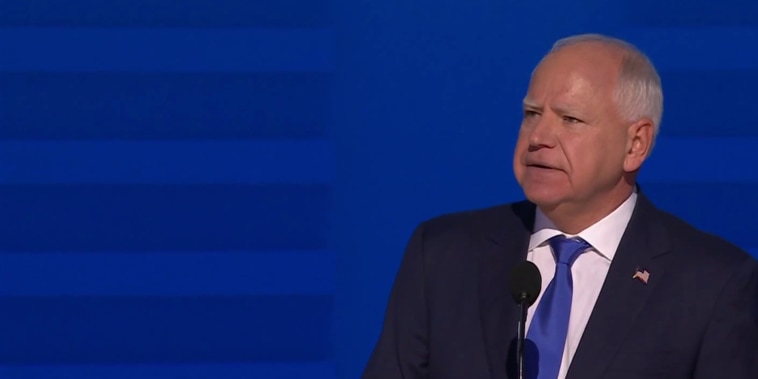

IMAGES
COMMENTS
Video essays are scholarly videos that invite researchers and class members to explore the audiovisual and multimedia language to make an academic argument. When applied to film research and pedagogy, the video essay is thus a recursive text. That is, the object of study, film, is mediated, or rather, performed, through the film medium.
The Video Essay Process This section will give an introductory overview of the stages required to create a video essay. Video essayers advice is to start simple and work through each stage of the video production process. Visit the Resources page of this guide for more.
A video essay is a video that analyzes a specific topic, theme, person or thesis. Because video essays are a rather new form, they can be difficult to define, but recognizable nonetheless. To put it simply, they are essays in video form that aim to persuade, educate, or critique. These essays have become increasingly popular within the era of ...
A video essay serves as a personal introduction on a college application. As a modern trend in the application process, some colleges and universities allow prospective students to submit a video essay, either in the place of the traditional written essay or, sometimes, as a separate element of the application packet.
Learn how to craft compelling video essays. This beginner's guide covers everything from thesis creation to editing and publishing.
How to make video essays There are already a number of very useful resources on how to make video essays, such as Greer Fyfe and Miriam Ross's ' How-to Video Essays ' (2015) and 'Teaching with Video in the 21st Century: Clips, Essays, Full Length Films and TV Programs' (Butler et al. 2015), both available in The Audiovisual Essay project in the REFRAME website.
Another collaborative video essay project, Once Upon a Screen, organised by Ariel Avissar and Evelyn Kreutzer, was published in the latest issue of The Cine-Files, and consists of a series of fantastic essays responding to a singular theme: how formative, traumatic experiences of cinema go on to impact our lives.
Video Essays Much like photo essays and traditional essays, video essays tell a story or make a point. The difference is that video essays use video to present the information. When you make a video essay, you can use video, pictures, text, music, and / or narration to create a video essay that is powerful and effective.
The results of our pilot are four examples of video essays, a structure for designing a video essay project (research plus film), a rubric for evaluating a video essay, samples of syllabi, tutorials, and an overview with types of support for students. Why use the video essay as a learning tool?
Writing Tips The video essay has become an increasingly popular way of presenting ideas and concepts in the age of the internet and YouTube. In this guide, we present a step-by-step guide on how to write a video essay and tips on how to make it.
Video essays are a powerful and engaging way for students to express their understanding of a particular topic or concept. By combining video footage with voiceover narration, students can create a multimedia presentation that showcases their knowledge and creativity. To create a video essay with students, there are free tools you can use.
The video essay is a short documentary film that's the equivalent of a research paper. This website explores the use of video essays as pedagogical, teaching tools. As well, it can be used as a guide to create low-budget personal video essays and stories. This project was conceived by Cecily Tyler along with a group of scholars affiliated with Harvard University. To start, click anywhere in ...
A video essay is an essay presented in the format of a video recording or short film rather than a conventional piece of writing; the form often overlaps with other forms of video entertainment on online platforms such as YouTube. [ 1][ 2][ 3][ 4] A video essay allows an author to directly quote from film, video games, music, or other digital ...
Maybe we can help each other out then come up with some great new ideas for your video projects. I hope you enjoyed this class. I hope many of you will go out and create kick-ass video essays with your new-found knowledge.
The historical lens of the cross-culture influences allows this analysis to go deeper than similar video essays, but the tone stays casual, giving plenty of asides and jokes for people familiar ...
The video essay will have the same components as an essay; an introduction, argument, discussion and conclusion. Students should be encouraged to approach the development of the video essay in the same manner as their academic essays; plan, prepare, research, write, edit and submit. Just as word counts restrict essays and allow them to be ...
By Kevin Lee, Our Far-Flung Correspondent In the age of YouTube and Vimeo, one of the most exciting developments in film culture are online video essays that explore different aspects of the movies. These videos take footage from films and reconfigure them using editing, text, graphics and voiceover to reveal startling observations and insights, visualizing them in ways that text criticism can ...
Students will demonstrate their understanding of expository writing and argumentative approaches. Students will compose a short video essay based on a previous assignment to learn the basics of video essay composition.
The best video essays of 2021. Introspection and the act of watching emerged as recurring themes across a year in which video makers responded to the realities of a continuing pandemic. Our poll of 30 video essayists, academics, critics and filmmakers highlights 120 recommendations. 18 January 2022. Practices of Viewing (2021)
This is an article telling you everything about video essay creation, including the best video essay generator, tips for creating a good video essay. Check it out!
Students may have written the only essays, but in this blog, we have explained in detail how to make a video essay by following a few easy steps.
The best video essays on YouTube came from Hbomberguy, Defunctland, F.D. Signifier and more, explaining race, politics, Barbie, media, and YouTube itself.
Students will use these video essay project to make original arguments about the interpenetrated histories, forms, and/or genres of video games and narrative cinema, drawing on primary sources drawn from the course syllabus and conducting secondary research on their own. In the process, we will work together to craft visual arguments about the visual media examined in the class.
The specific video essay requirements will vary by school, but these tips can help you to create a quality video for your MBA application.
CNN's Daniel Dale fact-checks Democrats who claimed Republican presidential candidate Donald Trump wrote the content of 'Project 2025' and details of what the policy says about mothers with ...
CNN's Kaitlan Collins reports 2024 Republican presidential nominee Donald Trump and his campaign are irritated by the references to "Project 2025" during the Democratic National Convention ...
Comedian and actor Kenan Thompson criticized a number of Project 2025's proposed policies as he addressed the Democratic National Convention Wednesday night. See Thompson's full remarks.
transcript. Kenan Thompson, the comedian and actor, walked onstage with a large prop book that said "Project 2025" on its cover at the Democratic National Convention on Wednesday night.
"Saturday Night Live" actor Kenan Thompson brought a giant book on stage at the Democratic National Convention to represent Project 2025. Kenan highlighted several points in the document that ...
SNL legend Kenan Thompson breaks down parts of 'Project 2025' at the Democratic National Convention in Chicago.